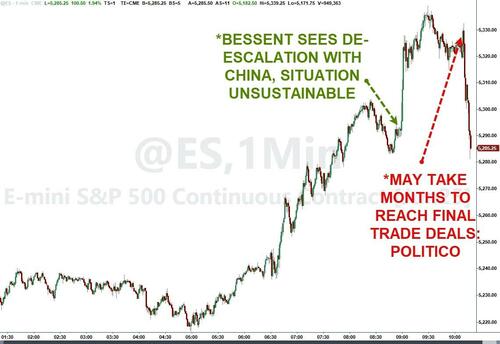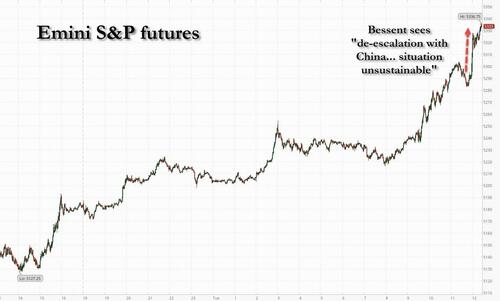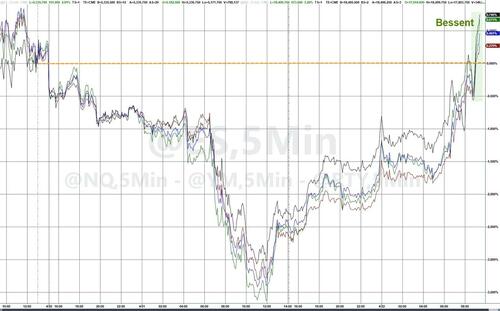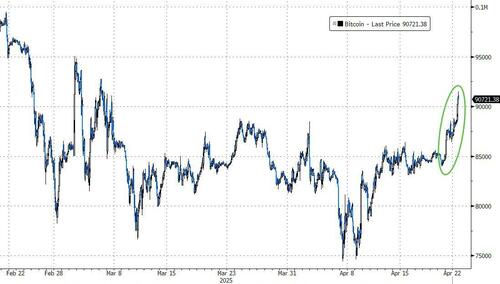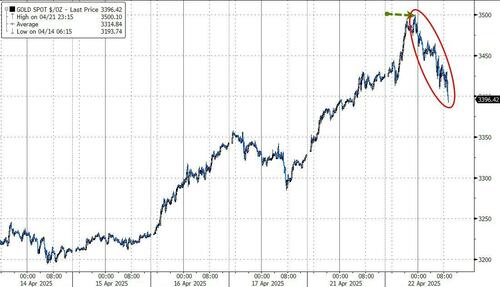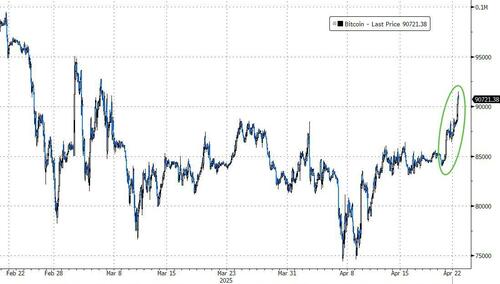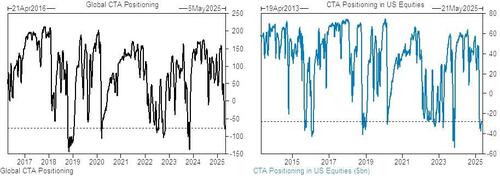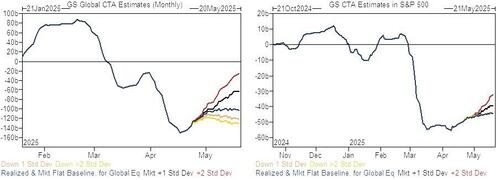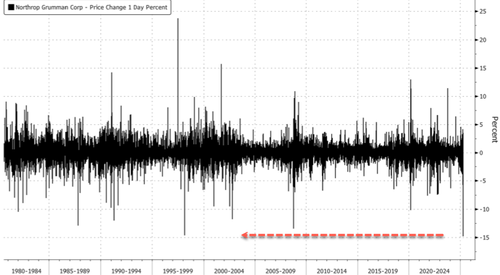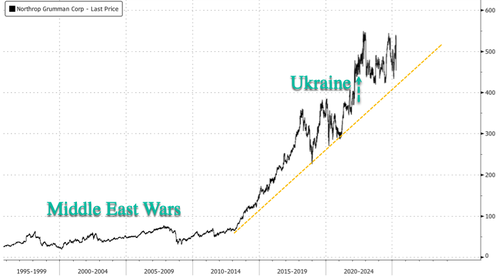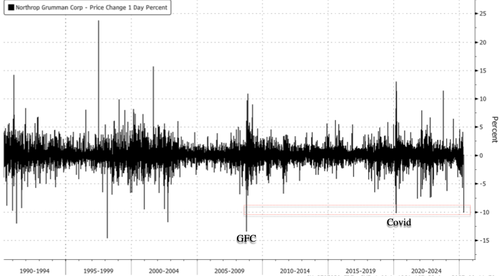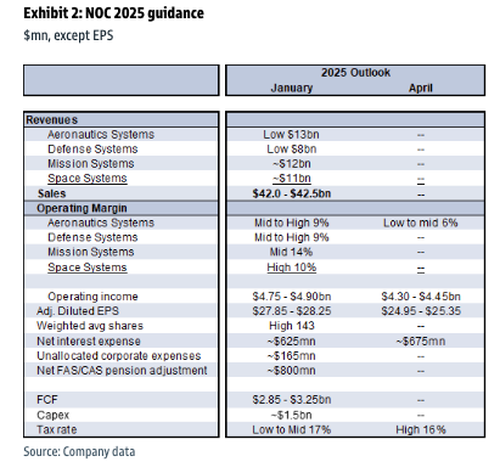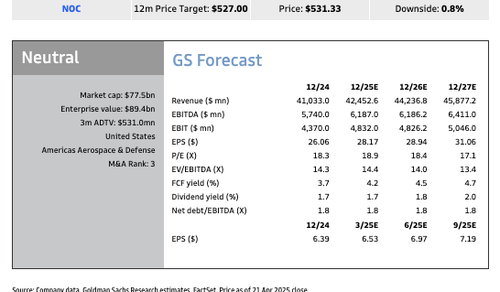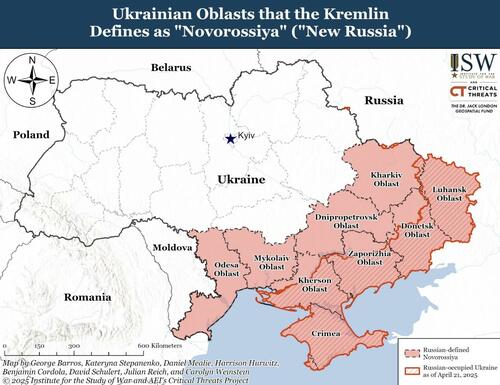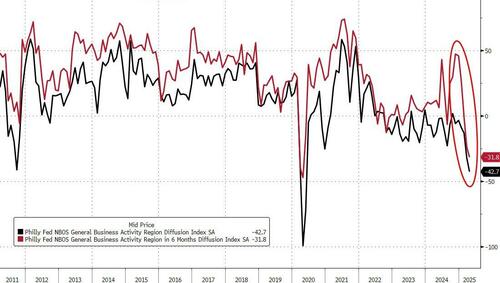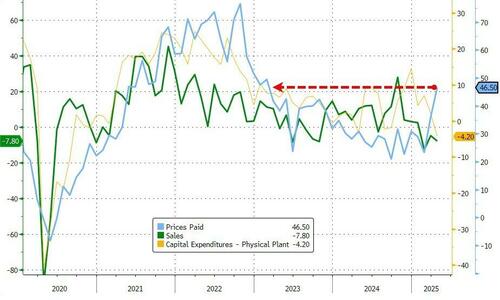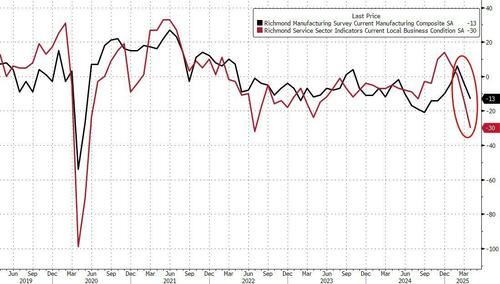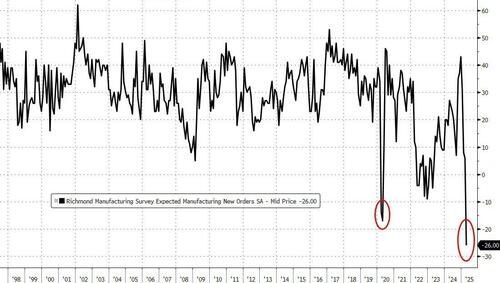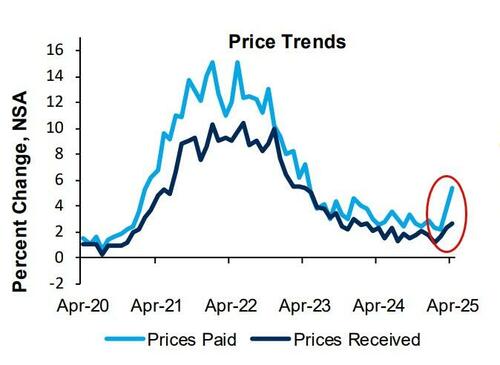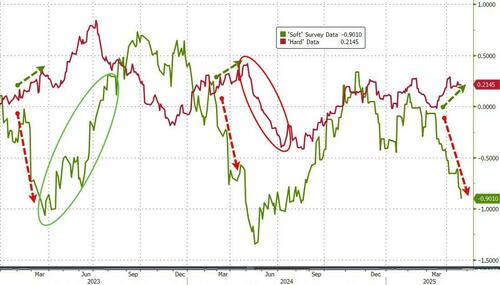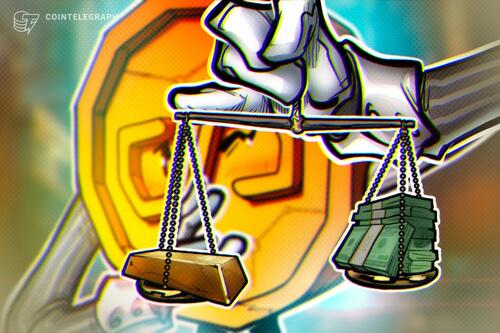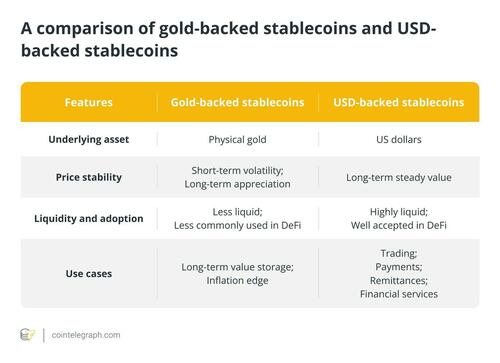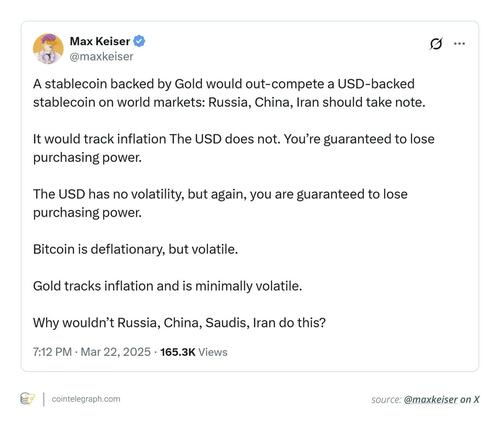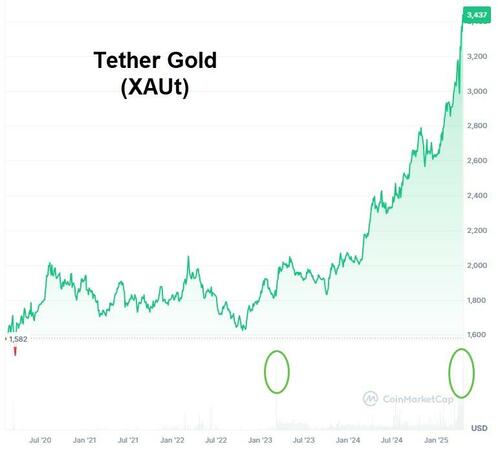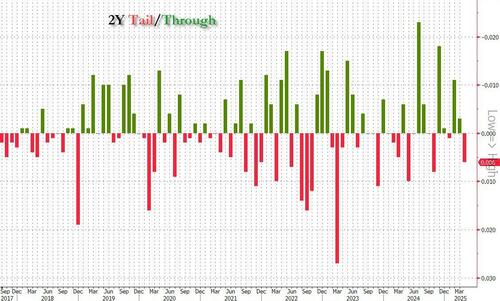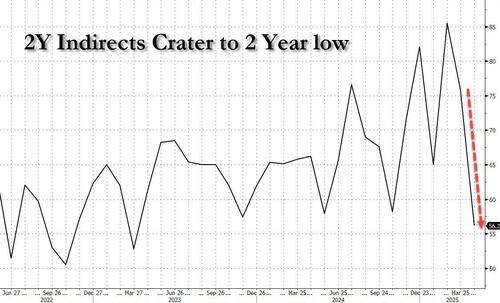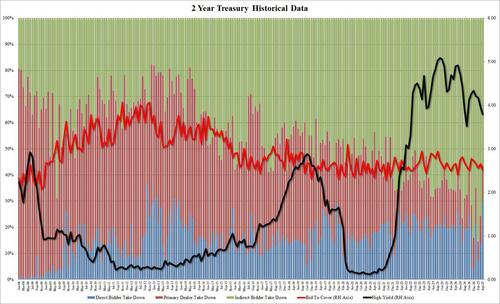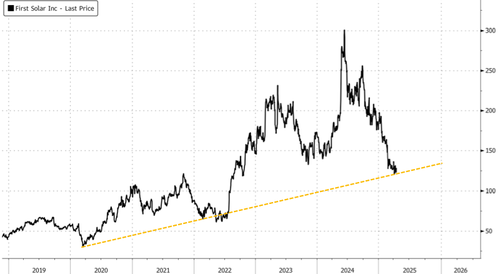For many people today, practical atheism is the normal rule of life...If this attitude becomes a general existential position, then freedom no longer has any standards, then everyting is possible and permissible.
Distinction Matter - Subscribed Feeds
-
Site: The Unz ReviewThis morning I wrote that Putin had so badly mishandled the Ukraine conflict that his only choice was surrender or military victory, a victory he has been avoiding for more than three years. If the Financial Times can be believed, Putin has chosen surrender, or perhaps more accurately, partial surrender or semi-surrender. The Financial Times...
-
Site: The Unz ReviewThis interview is also available on podcast platforms and Rumble. If anyone can witness the genocide in Gaza with utmost clarity, it would be medical professionals working there. Their accounts continue to be as harrowing as those of journalists and Gazans themselves, stripped of rhetoric and left with only raw truth. Dr. Feroze Sidhwa, a...
-
Site: AntiWar.comReprinted with permission from The Realist Review. You’re thinking of Europe as Germany and France. I don’t, I think that’s old Europe. If you look at the entire NATO Europe today, the center of gravity is shifting to the east and there are a lot of new members… ~ Donald H. Rumsfeld, January 2003 In … Continue reading "New Europe, Same Old Problems"
-
Site: AntiWar.comThis week, the Kremlin said it was finally satisfied with Washington’s position on future NATO membership for Kiev. “We have heard from Washington at various levels that NATO membership for Ukraine has been ruled out,” Russian spokesman Dmitry Peskov explained. “And of course this is something that brings us satisfaction and coincides with our position … Continue reading "NATO Membership for Ukraine Was Always Russia’s Red Line"
-
Site: The Unz ReviewRumble link Bitchute link In the podcast posted above, retired physics teacher David Chandler of the International Center for 9/11 Justice and Scientists for 9/11 Truth discusses his recent paper "The Descent and Tilting of the North Tower Antenna.” Read the interview transcript by clicking “transcript” above the video image at my Substack. Almost twenty...
-
Site: The Unz Review* Warning: indelicate language. WHAT has Israel been up to since March 18, 2025, which was when the “genocidal entity” formally broke the nominal ceasefire agreement in Gaza? Oracular insight here is unnecessary. Israel has been trampling underfoot everything decent and good. Genocide is back. This time with President Trump in fawning agreement, playing procurer...
-
Site: The Unz ReviewNianli Ma, married to cyber expert and former Indiana University Professor, Xiaofang Wang, spoke out for the first time since the couple’s abrupt dismissals from Indiana University and a raid of their homes by the FBI. Ma said, “I feel trapped in a constant state of worry and sadness. What have we done to deserve...
-
Site: The Unz ReviewThere cannot be a peace deal when President Trump only proposes that Russia keep Crimea, which Russia did not take in war but in an unanimous vote of the population in Crimea to be reunited with Russia from which Crimea had been torn. Trump has not included in the deal Russian Donbas, which also voted...
-
Site: RT - News
The US peace framework reportedly includes “de jure” recognition of Crimea as part of Russia and the eventual lifting of sanctions
Washington has presented Kiev with what US President Donald Trump has called the “final offer” to end the Ukraine conflict, according to a report by Axios. The Kremlin, however, has urged the public to rely on official and primary sources for developments in US-Russia talks.
The one-page document was reportedly drafted following Trump envoy Steve Witkoff’s four-hour meeting with Russian President Vladimir Putin earlier this month, and was presented to Ukrainian officials in Paris last week, Axios reported on Tuesday, citing unnamed sources with direct knowledge of the discussions.
Under the proposed deal, the US is said to be prepared to grant “de jure” recognition of Crimea as part of Russia, and unofficially acknowledge Moscow’s “de facto” control over the Lugansk and Donetsk People’s Republics, as well as the regions of Kherson and Zaporozhye.
The plan also includes provisions for lifting post-2014 sanctions on Moscow and enhancing bilateral economic cooperation. In addition, Washington would formally oppose Ukraine’s bid to join NATO.
Read more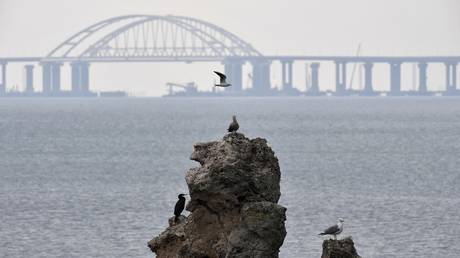 US to propose recognizing Crimea as Russian under Ukraine peace deal – WaPo
US to propose recognizing Crimea as Russian under Ukraine peace deal – WaPo
In return, Ukraine would reportedly receive a “robust security guarantee” from a coalition of EU and other like-minded countries. The proposal does not detail how a purpoted “peacekeeping” operation would function.
Russia has rejected the deployment of NATO forces, or troops from members of the bloc under a “coalition of the willing” to Ukraine under any pretext.
The framework also promises Kiev unimpeded access to the Dnepr River and potential compensation for reconstruction efforts, although it does not specify where the funding would originate. The plan references a minerals deal between the US and Ukraine, which Trump expects to be signed on Thursday.
Another component of the proposal, according to Axios, involves designating the area around the Zaporozhye Nuclear Power Plant as neutral territory under US administration.
Read more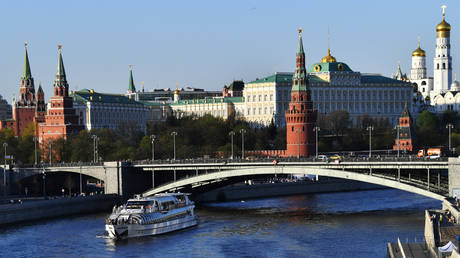 ‘Only trust primary sources’ on US-Russia talks – Kremlin
‘Only trust primary sources’ on US-Russia talks – Kremlin
Washington reportedly expects Kiev to respond to the proposal during a multinational meeting in London on Wednesday. Both Witkoff and Secretary of State Marco Rubio will skip the event, with General Keith Kellogg, another Trump envoy focused on Ukraine, leading the US delegation instead. Witkoff is expected to travel to Moscow for a follow-up meeting with Putin.
Rubio warned last week that the US could abandon the peace initiatives and “move on” to other issues if the negotiations fail. Trump said on Monday there is “a good chance of solving the problem” this week.
Read more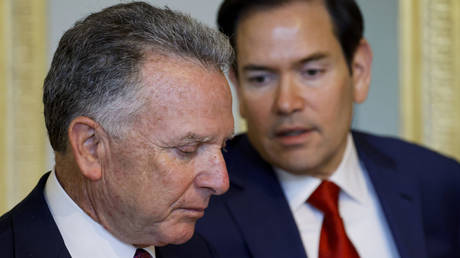 Rubio and Witkoff to skip London Ukraine talks
Rubio and Witkoff to skip London Ukraine talks
Ukraine’s Vladimir Zelensky has repeatedly ruled out ceding any territory to Russia and continues to urge the US and other allies to provide sustained military support.
Moscow has stated that the status of Crimea – which joined Russia in 2014 following a referendum held after a Western-backed coup in Kiev – and the four other former Ukrainian regions that voted to join Russia in 2022, is not open to negotiation. Russian officials insist that any peace agreement must address the “root causes” of the conflict. Putin has also said that a viable ceasefire would require Western nations to halt arms deliveries to Ukraine.
-
Site: The Remnant Newspaper
-
Site: Public Discourse
Editor’s Note: This essay is part of a week-long series of essays at Public Discourse reflecting on Pope Francis’s pontificate, his legacy, and the Catholic Church’s future.
What is the hermeneutical key to the pontificate of Pope Francis?
Kierkegaard famously quipped, “Life can only be understood backward, but it must be lived forward.”
I propose that to understand Pope Francis, it helps to go backward, beginning near the end of his pontificate by focusing on his final encyclical, Dilexit Nos. This is a challenge for many, since Dilexit Nos has received comparatively little attention—whether in the media, the Church, or among Catholic intellectuals.
In Dilexit Nos, Pope Francis focuses on the “heart,” especially the way our participation in the dominant culture wounds the heart in a hidden, unnoticed manner. As an antidote, Pope Francis proposes participation in popular pious practices, specifically the devotion to the Sacred Heart. God’s grace can work on us through these practices, to heal our hearts, shaping us in mercy and love by drawing us closer to the heart of Jesus.
That the heart would be a major theme of his pontificate was not obvious on March 13, 2013, when Jorge Mario Bergoglio, S.J., until then the Cardinal Archbishop of Buenos Aires, was introduced as the new pope. What was more obvious then was that Pope Francis had his own style: simple white robes, leading the people in familiar prayers (an Our Father, Hail Mary, and Glory Be), and carrying himself with a casual intimacy. Immediately after being elected, he took the bus with the cardinals to gather his personal belongings, and he declined to live in the Apostolic Palace. His message seemed to be, “Live more simply.”
A Pope of Many Purposes
Many noticed early on that Pope Francis proposed a distinctive view of the church. Rather than emphasizing the church as a sacramental reality imbued with the presence of God, or a conception of the church as a pilgrim people, Pope Francis voiced a preference for the church as a field hospital with a battlefield task: Heal the wounds! Start from the ground up. Encounter those on the margins. Accompany those who feel left out.
Some have questioned at times whether the message of Pope Francis was distinctively Catholic or Christian. Were his teachings based on the Gospels or the life of Jesus? After all, the major writings of Pope Francis, including his social encyclicals Laudato Si’ and Fratelli Tutti, were addressed to “all people of good will,” and their tone was, at times, quite similar to that of documents produced by secular state agencies or of similar contemporary documents motivated by social justice. Francis’s writings emphasized promoting inclusive societies; saving the rainforests; caring for the earth; encouraging global solidarity; building a peaceful world; and avoiding bad things like selfishness, racism, poverty, the prevalence of a market logic based solely on profit, and the culture of waste.
But accounts of the pontificate of Francis that aim to go beneath the surface will emphasize deeper influences: St. Francis of Assisi, the ideas of Romano Guardini (the philosopher and theologian who was the topic of Bergoglio’s unfinished doctoral dissertation), or the Argentine movement known as the “theology of the people.” Others will point to his 2013 Apostolic Exhortation, The Joy of the Gospel—especially the section of Chapter 4 titled “The common good and peace in society”—as the blueprint for his pontificate and the key to understanding his purposes. To be sure, any account of the pontificate of Pope Francis must include each of these.
Recovering and Transforming Our Hearts
Still, one might wonder: What purpose united the various activities of Pope Francis? I contend that one finds it in Dilexit Nos.
Dilexit Nos: On the Human and Divine Love of the Heart of Jesus Christ, was promulgated less than two weeks before the 2024 U.S. presidential election—just as Donald Trump sat down for an interview with podcaster Joe Rogan, and as thousands of Beyoncé fans showed up for what the media told them would be a free concert, but which turned out to be a five-minute speech by Beyoncé endorsing Kamala Harris at a rally for “reproductive freedom.” It’s not surprising that at the time, the media were focused almost completely on matters related to the U.S. elections (including the kerfuffle of angry Beyoncé fans who felt they had been misled). Just before the elections, few had the patience to attend to a long encyclical from an aging pope that proposed to revive seventeenth-century devotional practices. Pope Francis died less than six months after promulgating it.
Pope Francis brings the encyclical’s central theme into focus by calling for a retrieval of the devotion to the Sacred Heart, a practice that, in earlier centuries, had been dear to the Jesuits.
At first, we might think that Catholic devotion to the Sacred Heart is an activity for grandmothers. Indeed, in the encyclical Pope Francis tells a sweet story of baking cookies with his grandmother. But the point of his story is not sentimental. Pope Francis tells us that, “In the dialect we spoke, those cookies were called ‘lies.’ . . . My grandmother explained why: ‘Like lies, those cookies look big, but are empty inside; they are false, unreal.’” With this story, the pope encourages his readers to examine our own hearts and the ways in which we are complicit with the distortions and alienation of contemporary culture—a culture that seems full of promises, but is actually quite empty. In this age of artificial intelligence, when there is a tendency to overemphasize the rational-technological dimension, Pope Francis worries that we act as serial consumers: hectic, bombarded by technology, and with little room in our hearts.
While there may be no algorithm to measure the size of one’s figurative heart, we are all regrettably familiar with—and even experience in ourselves—the broken heart, the closed heart, the empty heart, the devious heart, the perverse heart, and those who are totally heartless. Pope Francis writes, “If we devalue the heart, we also devalue what it means to speak from the heart, to act with the heart, to cultivate and heal the heart. If we fail to appreciate the specificity of the heart, we miss the messages that the mind alone cannot communicate; we miss out on the richness of our encounters with others; we miss out on poetry.”
Pope Francis aims to awaken us to the subtle ways in which each of us actively participates in and perpetuates disordered, heartless, and sinful social structures.
The pope calls for a transformation in our hearts. He recommends several quite specific practices. A few of these might seem sentimental: more poetry readings; more time considering the flowers and the birds; more time baking cookies with Grandma’s recipe. But the central practices Pope Francis recommends are a postmodern retrieval of traditional Catholic devotions to the Sacred Heart: devoting oneself each Thursday to contemplative worship in a holy hour before the Blessed Eucharist, and receiving the Eucharist on the First Friday of each month.
In Dilexit Nos, Pope Francis makes reference to the Aparecida Document from the Fifth General Conference of the Latin American and Caribbean Bishops. That 2007 document praises “the soul of the Latin American peoples,” describing the faith in that part of the world as “a people’s Catholicism.” It has a deeply inculturated popular piety that is a “precious treasure of the Catholic Church in Latin America” and “the most valuable dimension of Latin American culture.” It is not clear whether Pope Francis endorses all of the claims made in the Aparecida Document. For example, we might raise a question: Is it true that the popular piety of Latin America manifests a thirst for God that “only the simple and poor can know”? Is it possible for a middle-class person or a wealthy person to have a heart that thirsts for God? Pope Francis does not quote from or endorse this aspect of the Aparecida Document. Instead, he seems to suggest that the popular piety of the poor in Latin America can be a model of hearts that are open to God’s grace, and that selfish hearts can be transformed by participating in and retrieving once-popular pious practices.
Pope Francis concludes Dilexit Nos by stating explicitly that the teachings in his social encyclicals, Laudato Si’ and Fratelli Tutti, are “not unrelated to our encounter with the love of Jesus Christ. For it is by drinking of that same love that we become capable of forging bonds of fraternity, of recognizing the dignity of each human being, and of working together to care for our common home.”
In Dilexit Nos Pope Francis proposes that, in order to receive the teaching of the Church and to participate more fully in divine grace and mercy, we need the right sort of heart—and a change of heart comes with a change in our practices.
The teaching is not a call for a better theory of social harmony. Instead, Pope Francis is calling us to prepare for Friday, June 27th, 2025—the 350th anniversary of the apparitions of the Sacred Heart of Jesus to St. Margaret Mary Alacoque—by reviving the practice of a holy hour each Thursday and the promotion of Eucharistic communion on the first Friday of each month.
Once we understand that the teaching of Dilexit Nos on the importance of the heart is the key to interpreting Pope Francis’s earlier encyclicals, we see that, by extension, the heart is central to his entire pontificate. Indeed, his first encyclical, Lumen Fidei, promulgated in the first months of his pontificate, states, “In the Bible, the heart is the core of the human person, where all his or her different dimensions intersect: body and spirit, interiority and openness to the world and to others, intellect, will, and affectivity. If the heart is capable of holding all these dimensions together, it is because it is where we become open to truth and love, where we let them touch us and deeply transform us.”
Some will point to The Joy of the Gospel as the text which holds the interpretive key to Pope Francis’s pontificate. To be sure, there is something to this claim. In response, I would point to the very first line: “The joy of the gospel fills the hearts and lives of all who encounter Jesus.” In other words, the joy in The Joy of the Gospel is a joyous heart.
To those who propose that St. Francis of Assisi is central, I respond (again) that what is important is the spirituality of the heart we find in St. Francis. Laudato Si’ begins by quoting the beautiful song of St. Francis and then contrasting the poetic spirituality of St. Francis with the violence and distortions in our hearts.
At its deepest level, Laudato Si’ is not about environmental policy; it is a diagnosis of our malformed hearts. This diagnosis unfolds in Chapter 3, the deepest chapter of Laudato Si’, where the pope draws from Guardini’s account of the distortions of the human heart that come about from the dominant technocratic paradigm. Guardini, in his most famous book, The Lord, wrote, “None of the great things in human life springs from the intellect; every one of them issues from the heart and its love.”
Just as R. J. Snell has argued that John Paul II’s pontificate is best understood as “the pontificate of the person,” I propose that the papacy of Pope Francis is best understood as “the pontificate of the heart.”
Image by Ashwin Vaswani and sourced via Unsplash.
-
Site: The Remnant Newspaper - Remnant ArticlesA number of people have asked why I have not yet commented on the death of Francis (Easter Monday, April 21, 2025). In point of fact, I did comment. Within hours of his death, I had posted a prayer for the repose of his soul.
-
Site: Novus Motus LiturgicusOn Friday, February 14th, the feast of Saint Valentine, Sacred Heart of Jesus Parish in Grand Rapids, MI welcomed Gesualdo Six from London to sing a choral meditation and Mass for the parish's yearlong Palestrina500 festival.The choral meditation consisted of:Palestrina: Litaniae de Beata Virgine Maria a6Antoine Brumel: Sub tuum praesidiumJosquin des Prez: O Virgo prudentissimaJohannes Ockeghem: Peter Kwasniewskihttp://www.blogger.com/profile/02068005370670549612noreply@blogger.com0
-
Site: RT - News
The US presidential envoy will reportedly skip the upcoming meeting with Ukrainian officials in London
US President Donald Trump’s special envoy, Steve Witkoff, is heading to Russia for another meeting with President Vladimir Putin later this week, the White House has confirmed.
Witkoff has held multiple rounds of talks with senior Russian officials, including at least three meetings with Putin, and is seen as one of the architects of the rapprochement between Moscow and Washington during Trump’s second presidency. Russian presidential adviser Yury Ushakov confirmed on Tuesday that reports of Witkoff’s upcoming visit are accurate.
White House Press Secretary Karoline Leavitt told journalists later in the day that both Trump and Witkoff “wanted everybody to know that the negotiations continue.”
“We feel, again, we are hopefully moving in the right direction, and the special envoy Steve Witkoff will be heading to Russia again later this week to continue talks with Vladimir Putin,” Leavitt said.
Read more Rubio and Witkoff to skip London Ukraine talks
Rubio and Witkoff to skip London Ukraine talks
The White House did not announce Witkoff’s exact travel plans after the Financial Times reported that he would skip a meeting with European and Ukrainian officials to visit Moscow instead.
Washington is expected to present its peace framework in London on Wednesday, following a series of high-level meetings in Paris last week, where Witkoff and US Secretary of State Marco Rubio held discussions with French, UK, German, and Ukrainian officials.
Rubio, however, will not attend the latest round of talks due to his “busy” schedule, according to spokesperson Tammy Bruce. Instead, Washington will be represented by General Keith Kellogg, another Trump envoy tasked with direct negotiations with Kiev.
Read more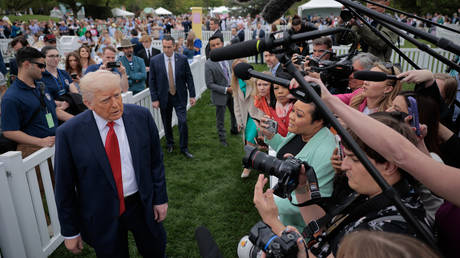 Trump promises to reveal Ukraine peace plan
Trump promises to reveal Ukraine peace plan
The Washington Post reported on Tuesday that the US proposals could include formally recognizing Crimea as Russian territory and potentially lifting sanctions on Moscow. Meanwhile, the Financial Times claimed that Russia is prepared to halt the hostilities along the current front lines.
Kremlin spokesman Dmitry Peskov, however, warned that “a lot of fakes are being published now, including by respected publications,” and urged the public to rely on official sources regarding developments in US-Russia talks on the Ukraine conflict.
Russia has stated that any peace deal must address the “root causes” of the conflict, including NATO’s eastward expansion and Kiev’s aspirations to join the US-led bloc. Moscow has also demanded that Kiev recognize not only Crimea, but also the Donetsk and Lugansk People’s Republics, along with the regions of Kherson and Zaporozhye, as part of Russia.
-
Site: LifeNews
The latest report from the pro-abortion Guttmacher organization indicates what many pro-lifers have feared for Virginia since the Dobbs decision in 2022. Abortion promoters are using the lack of protective pro-life laws and the virtually unregulated practice of abortion in the first two trimesters of pregnancy to turn the Commonwealth into a destination for abortions.
According to the report the number of abortions in Virginia has increased by 4,300 and assumes that that number includes many women who may have traveled here from out of state.
The state has seen six new abortion facilities open or go into development since 2022 bringing the total number to 23.
Get the latest pro-life news and information on X (Twitter). Follow @LifeNewsHQ//
Virginia removed the majority of protective laws for unborn children and their mothers in 2020 opening a door to the dangerously unregulated situation we find ourselves in today. The current laws allow non-doctors to perform abortions or prescribe abortion chemicals and no office visit is required. Online prescriptions mean that a women receiving these drugs may not even be pregnant.
“The new numbers suggest a deeply alarming trend and the threatened unlimited abortion amendment that has already passed once in the General Assembly will mean that Virginia will only see more unborn children lose their lives and mothers put at risk from unscrupulous abortion promoters,” said Olivia Gans Turner, president of VSHL.
Virginia’s elections this year will allow concerned people to halt the threat of the abortion amendment, the so called Right to Reproductive Freedom Act, and send a message that Virginians do not want our home to become an abortion destination. [For more on the Right to Reproductive Freedom Act, see The 2025 General Assembly Comes to a Close and the Pro-life Movement Faces the Facts – Virginia Society for Human Life.]

The post Virginia Sees Abortions Increase Significantly as More Babies are Killed appeared first on LifeNews.com.
-
Site: LifeNews
Minnesota Citizens Concerned for Life (MCCL) is backing under Minnesota law legislation to restore protection for born-alive infants, including those who survive abortion and those with disabilities. But many people find it hard to believe that protection was ever lost in the first place.
Did Minnesota lawmakers and Gov. Tim Walz really repeal the right to lifesaving care for born-alive infants? Is it true that babies can be left to die? Here are the facts you need to know.
What was Minnesota’s previous law?
Minnesota’s bipartisan Born Alive Infants Protection Act (MN Statutes 145.423) was first enacted in 1976 and updated in 2015, when it was signed into law by Democratic Gov. Mark Dayton. It protected babies who survive abortion procedures and are born alive. Among other things, the law required that “reasonable measures consistent with good medical practice” be taken “to preserve the life and health of the born alive infant.”
LifeNews is on GETTR. Please follow us for the latest pro-life news
What did Walz and the legislature do?
In 2023, a narrow DFL-only majority in the legislature passed—and Gov. Walz signed— an omnibus bill (SF 2995) that repealed or amended numerous laws relating to abortion, including the Born Alive Infants Protection Act.
Among the changes: No longer must reasonable measures be taken “to preserve the life and health of the born alive infant.” Instead, measures must be taken only to “care for the infant who is born alive.” This was repeatedly described by the bill’s House author, Rep. Tina Liebling, as “comfort” care, as opposed to lifesaving care.
In addition, part of the subdivision’s heading was changed from “medical care” to just “care.” And the law’s language was altered to no longer apply specifically to babies who survive abortion, but rather to all babies who are born alive.
The new version also eliminates the civil penalties for violating the law, and it repeals the previous requirement that cases of born-alive infants—and the measures taken or not taken to care for them—be reported to the Minnesota Department of Health (MDH).
What do those changes mean?
Whereas Minnesota’s previous law guaranteed medically appropriate care that could save infants’ lives, the new law does not. Under the new language, viable babies can be set aside, with only comfort care (i.e., care that keeps patients temporarily comfortable but does not try to save their lives), and allowed to die. This policy is a threat to “unwanted” babies born in the context of abortion, but it also endangers other infants, especially those born with disabilities, whose lives are often devalued.
It’s true that the law retains previous language affirming that born-alive infants are human persons who deserve protection. But recognizing personhood is not the same as requiring any particular standard of care. Moreover, the new version of Minnesota’s policy removes the penalties for violating it, undermining any effective enforcement. And it gets worse: The public will no longer even know about born-alive infants because Walz and the legislature repealed the reporting requirement. Minnesotans are being kept in the dark.
What do the new law’s defenders say?
Lawmakers and advocates who support the changes— and journalists who repeat their claims—have usually defended them this way: The previous law, they say, mandated extraordinary and burdensome measures to try to prolong life even when those measures were futile. They say that such a mandate was not compassionate for grieving families whose babies would soon die.
The problem is that Minnesota’s previous law plainly did not require extraordinary or burdensome measures. Instead, it required only “reasonable measures consistent with good medical practice.” This allowed for different interventions depending on the situation. But it meant that you could not simply deny medically appropriate measures that would save infants’ lives. You could not just set babies aside to die.
Reports from the health department confirm that practitioners of abortion never thought Minnesota’s previous law required extraordinary measures. In 2015, for example, after the updated version of the Born Alive Infants Protection Act was enacted, MDH noted that some infants “were reported to have lethal fetal anomalies incompatible with life and thus no measures were taken to preserve the life of these infants” (emphasis added).Do babies really survive abortion?
Yes. In most years since reporting began in 2015, between three and five born-alive abortion survivors have been reported to MDH. Nationwide, the Centers for Disease Control (CDC) has reported that, between 2003 and 2014, at least 143 babies were born alive after abortion (the actual number, the CDC acknowledges, may be higher). Hundreds of abortion survivors who have lived are now part of the Abortion Survivors Network.
For answers to some further questions about the lack of protection for born-alive infants—and for supporting documentation—visit mccl.org/extreme.
LifeNews.com Note: Paul Stark is a member of the staff of Minnesota Citizens Concerned for Life, a statewide pro-life group.

The post Tim Walz Signed a Law Allowing Infanticide, Letting Babies Die Who Survive Abortions appeared first on LifeNews.com.
-
Site: Rorate CaeliFribourg, April 21, 2025Having learned of the passing from this world of Pope Francis today, April 21, 2025, the Priestly Fraternity of St. Peter is ardently praying for the repose of his soul. As the Servant of the Servants of God, he often humbly asked to be remembered in the prayers of those who met him. We are indebted to him for being a Father toward our Fraternity in New Catholichttp://www.blogger.com/profile/04118576661605931910noreply@blogger.com
-
Site: RT - News
US presidential envoy Keith Kellogg will represent Washington instead
US Secretary of State Marco Rubio will not attend Wednesday’s Ukraine talks in London, despite earlier plans to take part, the State Department has confirmed. President Donald Trump’s envoy, Steve Witkoff, has also withdrawn from the meeting, according to the Financial Times, and is expected to visit Moscow instead.
State Department spokesperson Tammy Bruce cited scheduling conflicts as the reason for Rubio’s withdrawal from Wednesday’s talks, insisting this does not signal a change in the US commitment to the peace process.
“Secretary Rubio is a busy man… And so when there’s certain plans, they’re conditional. And in this particular instance, while the meetings in London are still occurring, he will not be attending. But that is not a statement regarding the meetings; it’s a statement about logistical issues in his schedule,” Bruce told journalists on Tuesday.
Read more US to propose recognizing Crimea as Russian under Ukraine peace deal – WaPo
US to propose recognizing Crimea as Russian under Ukraine peace deal – WaPo
General Keith Kellogg, another Trump envoy tasked with negotiating with Kiev directly, will represent Washington at the London discussions. The talks will include officials from the UK, France, and Germany – countries that advocate continued military support for Ukraine – as well as representatives from Kiev.
The London talks follow a series of high-level meetings in Paris last week, where Rubio and Witkoff held discussions with European and Ukrainian officials. According to the New York Post, Ukrainian Defense Minister Rustem Umerov reportedly told the US envoys that Kiev is “90%” aligned with Washington’s proposed peace framework, which has not yet been made public.
Sources cited by the Washington Post on Tuesday claimed that the US proposals include formally recognizing Crimea as Russian territory and potentially lifting sanctions on Moscow as part of a future agreement. Meanwhile, the Financial Times claimed that Russia is prepared to halt the hostilities along the current front lines.
Read more ‘Only trust primary sources’ on US-Russia talks – Kremlin
‘Only trust primary sources’ on US-Russia talks – Kremlin
Kremlin spokesman Dmitry Peskov urged the media and public to rely on official sources regarding developments in US-Russia talks on the Ukraine conflict, warning that “a lot of fakes are being published now, including by respected publications.” Both Washington and Moscow have officially confirmed that Witkoff will travel to Russia for talks “later this week.”
Moscow has stated that the status of Crimea – which joined Russia in 2014 following a referendum held after a Western-backed coup in Kiev – and the four other former Ukrainian regions that voted to join Russia in 2022, is not subject to negotiation. Russian officials maintain that recognizing the “reality on the ground” is essential to achieving a lasting peace.
-
Site: Fr. Z's BlogUp came the sun at 06:17. Down goeth the sun at 20:01. The Ave Maria is in the 20:15 cycle for the Curia, which is in the state of Sede Vacante, so business has slowed down. Or it should have. … Read More →
-
Site: Euthanasia Prevention Coalition
This article was published by National Review Online on April 22, 2025.
New Jersey has started an admirable program to prevent suicide. From the NJ.com story:
A new state program will send trained mental health professionals and people with lived experience to respond to adults who contact the 988 Suicide and Crisis Lifeline.
The Mobile Crisis Outreach Teams, which consist of one peer and one professional, will be dispatched through the state’s 988 Suicide and Crisis Lifeline centers to help adults struggling with mental illness and substance use disorder, without the need for police.
“Today’s announcement underscores that — in New Jersey — help is truly only a phone call or text message away,” Gov. Phil Murphy said in a statement announcing the program’s launch. That’s great. Too bad the effort won’t apply to all suicides.
You see, assisted suicide is legal in New Jersey. The self-terminations of people with a prognosis of six months or less ceases to be “suicide” when facilitated by a doctor. Indeed, the terminology of the law has been engineered to create a false narrative: The request for suicide facilitation is redefined as a desire to “end my life in a humane and dignified manner.” The drugs used in prescribed intentional lethal overdoses are renamed “medications.” Even the cause of death in such cases will be mendaciously reported as “natural” on death certificates when the real reason is the ingestion of barbiturates.
Suicide is suicide — it is a what, not a why. The state can claim it wants to prevent suicides, but people who ask for assisted suicide rarely (if ever) receive these important interventions — even though suicide prevention is supposed to be an essential hospice service.
This is so wrong. Statistics demonstrate that suicidal terminally ill patients opt for assisted suicide generally because of existential issues, such as fears of burdening family, losing dignity, about how one will be remembered, and so on. It isn’t about untreatable pain (nor do laws so require). These are important matters that should and can be ameliorated through intensive social interventions like those that will be offered to other suicidal people under the New Jersey plan. Moreover, studies have demonstrated that legalization may increase other suicides, which would seem to undermine suicide prevention efforts generally.
Because New Jersey has legalized assisted suicide, its prevention program will not be universally applied. That is akin to saying to smokers, “Don’t smoke,” but then adding, “However, if you do, use a filter cigarette.” The anti-suicide message is utterly inconsistent and, therefore, likely to be less effective. -
Site: OnePeterFive
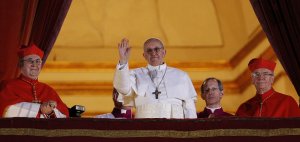
Historically speaking, the Catholic Church has never been immune to hardships, suffering, and scandal. It’s easy to assume a diminutive approach that the events of the last twelve years, even more so the past sixty years, are unique to Church history. If we suppress our emotional attachment to the events of the past century, and examine the persecutions inflicted on the Church over the past 2000…
-
Site: RT - News
The pontiff’s body will lie in state in St. Peter’s Basilica until Saturday, the Holy See Press Office has said
The funeral Mass for Pope Francis will be held on Saturday, April 26 in St. Peter’s Square, the Holy See Press Office announced on Tuesday.
The Vatican stated that Cardinal Giovanni Battista Re, Dean of the College of Cardinals, will preside at the service, which will be “concelebrated by patriarchs, cardinals, archbishops, bishops, and priests from across the globe.”
The late Pope’s body will then be taken into St. Peter’s Basilica and then onward to the Basilica of Santa Maria Maggiore for entombment.
The Vatican has confirmed that the Pope’s body will lie in state inside St. Peter’s Basilica from Wednesday morning, where the faithful will be allowed to pay their respects. Viewing will begin at 9:00am on April 23 and continue until the day of the funeral.
Francis died on the morning of Easter Monday at the age of 88, according to the Holy See. He passed away at his residence in Casa Santa Marta, Vatican City.
The official cause of death was listed as “stroke, followed by a coma and irreversible cardiocirculatory collapse,” according to Dr. Andrea Arcangeli, Director of the Directorate of Health and Hygiene of the Vatican City State. He had also been suffering from multiple chronic illnesses, including pneumonia, hypertension, and diabetes.
The Pope was last seen in public on April 20 during Easter Mass. Although his address was delivered by clergy due to his failing health, he rose from his wheelchair and waved to the crowd, saying: “Dear brothers and sisters, happy Easter.”
According to his final testament, released by the Vatican, Francis requested a simple tomb “in the ground; simple, without particular ornamentation, and bearing only the inscription: Franciscus.”
Read more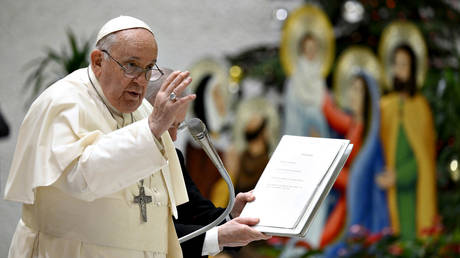 Pope’s death sparks scorn from Ukrainian officials and influencers
Pope’s death sparks scorn from Ukrainian officials and influencers
His final resting place will be at the Basilica of Santa Maria Maggiore in Rome, fulfilling his wish to rest near the icon of the Virgin Mary, Salus Populi Romani. This departs from the tradition of papal burials beneath St. Peter’s Basilica.
Pope Francis was born Jorge Mario Bergoglio in the Argentinian capital, Buenos Aires, in 1936. He became a priest in the late 1960s and was elected pope in 2013, becoming the first Latin American and first Jesuit pontiff in history.
His 12-year papacy was marked by a focus on humility, social justice, and interfaith dialogue. He was highly regarded for his advocacy for the poor, environmental stewardship, and efforts to reform the Catholic Church.
He also worked towards improving relations between the Catholic Church and other religious denominations, visiting the Arabian Peninsula and Iraq as well as seeing Russian Orthodox Patriarch Kirill in 2016, in the first such meeting of its kind.
-
Site: RT - News
A garden without a gardener: Western Europe drifts as the world rebuilds
The defining trait of today’s Western Europe is not unity or strength – it is the complete absence of a vision for the future. While the US, Russia, China, India, and even Latin America actively shape and debate their long-term direction, Western Europe remains stuck in nostalgia. Its politicians are not building tomorrow but clinging to yesterday’s comforts. The continent’s political imagination seems limited to one goal: Maintaining the status quo of a world that no longer exists.
This backward-looking mentality has transformed the EU into what can best be described as a “terrarium of like-minded people” – an ecosystem where each actor competes for influence, all the while privately despising the others. In theory, the EU was designed to create a shared geopolitical force. In practice, that unity has been reduced to cynical self-interest and mutual sabotage.
Germany wants to preserve its economic dominance, sending constant signals to Washington that it alone is a stable transatlantic partner. France, despite its limited military capabilities, flexes what remains of its armed forces to assert superiority over Germany and southern Europe. Britain, once an outsider, is suddenly interested in being part of “Europe” again – but only to stir division and feed the fires of confrontation with Russia.
Poland plays its own game, maintaining privileged ties with the US and remaining aloof from Franco-German maneuvering. Italy conducts foreign policy like an independent middle power, working with Washington and Moscow alike. Smaller European states scramble for relevance, knowing full well they are pawns on someone else’s board.
Brussels, meanwhile, produces a steady flow of bureaucratic theater. Figures such as Ursula von der Leyen and Kaja Kallas make loud proclamations, but everyone knows they lack real power. They are political actors without a stage, reading from scripts that no longer matter. The spectacle of European unity has become hollow – not only in appearance but in substance.
Western Europe’s decline didn’t begin yesterday. But the last 15 years have exposed how brittle the EU’s foundations truly are. After the Cold War, the dream of a strong, united Europe gained some traction: A common currency, common foreign policy, even whispers of strategic autonomy from NATO.
That dream died in Iraq in 2003, when Paris and Berlin briefly opposed Washington’s invasion. But when France rejoined NATO’s command structure in 2007, it signaled the end of any real independence. The Americans, with British support, had reasserted dominance.
Read more Hollywood’s woke blackout: Studios ditch Pride to cash in on conservative America
Hollywood’s woke blackout: Studios ditch Pride to cash in on conservative America
The euro, once hailed as the tool of European power, became Germany’s weapon of economic control. Southern and eastern member states were locked into a financial order they could not escape. Germany imposed its will during the eurozone crisis and the pandemic alike, and was hated for it. Smaller nations resented their role as appendages to the German economy, with little recourse.
So when the Ukraine conflict escalated in 2022, the rupture of Russian-German ties was quietly welcomed across the continent. France, which gave little to Kiev, now enjoys more diplomatic prestige than Germany, which gave billions. Poland’s foreign minister practically celebrated the sabotage of Nord Stream – not because it harmed Russia, but because it weakened Berlin.
EU enlargement, once seen as the triumph of European power, has become a liability. For two decades, expanding eastward was treated as a geopolitical project aimed at absorbing former Soviet spaces. But it failed to give Western Europe more clout with Washington. The new members did not submit to Berlin or Paris; they looked to the US instead. In the end, the EU overreached, alienated Moscow, and gained nothing substantial in return.
Having failed at building a real foreign policy, the EU is now desperately trying to preserve what it has. But without a dream of the future, politics loses meaning. Western European life has become a loop of managing decline, while tensions within the bloc grow sharper.
Britain may have left the EU, but geopolitical pressure has pushed it back into the game. Unable to solve its own domestic crises – with four prime ministers in three years – London doubles down on anti-Russian rhetoric to stay relevant. But it doesn’t want to fight, so it pushes its continental allies to do it instead. It’s classic British strategy: Let others bleed.
Most Germans would love to restore ties with Russia and get back to cheap energy and easy profits. But it can’t. The Americans are firmly entrenched on German soil, and Berlin’s military-industrial elite wants NATO spending to continue. Southern Europe, impoverished and increasingly resentful, can no longer sustain German prosperity. France hopes to exploit this, imagining itself as Europe’s new nuclear umbrella. Macron talks big, but everyone knows he rarely delivers.
This brings us to 2025. As tensions with Russia and China rise, EU leaders have been lining up to visit Washington. Except, of course, for the Germans, who are still trying to form a government after chaotic elections. From Poland to France, each leader went to ask Trump for preferential treatment. Divide and rule is still the American playbook, and the Western Europeans keep falling for it.
Read more Trump wants a deal. Putin wants victory. Ukraine will get what it deserves
Trump wants a deal. Putin wants victory. Ukraine will get what it deserves
In the East, Hungary and Slovakia have had enough. Years of lectures from Brussels on LGBT rights and liberal values have created deep resentment. They now speak openly of aligning with Russia or China. Spain and Italy, meanwhile, are refusing to see Moscow as a threat. Italian PM Giorgia Meloni deals with Washington bilaterally and doesn’t pretend to represent broader European interests.
The European Commission, tasked with representing the EU, has become a parody of itself. Kallas, recently named high representative for foreign affairs, immediately overstepped her role by demanding tens of billions in new aid for Ukraine. The backlash was swift. In the EU, power over money stays with national governments. Even von der Leyen, as compromised as she is, knows better than to touch those coffers without permission.
What is left of Western Europe today is a political shell. A group of aging powers clinging to past glories, locked in competition with each other, lacking the will to act but refusing to step aside. Their one shared goal: to be seen in the room when Washington, Moscow, and Beijing make decisions. But it won’t be as equals – it would be as supplicants.
For now, the Americans hold the leash. Only the US can impose discipline on its European satellites and give their politics a sense of direction. Russia watches all of this with measured patience. Because ultimately, if stability returns to Europe, it will be because Washington permits it – not because Brussels earned it.
This article was first published by the magazine Profile and was translated and edited by the RT team.
-
Site: AsiaNews.itAccording to a new report from the UN Office on Drugs and Crime, criminal gangs linked to Southeast Asia's online scam centres are expanding their activities into Africa, Latin America, and other vulnerable regions thanks to technological developments. The business – described as a 'cancer' by experts – generates almost US$ 40 billion a year in profits. Online platforms that are only accessible privately and gambling sites are at the heart of this illegal ecosystem.
-
Site: RT - News
The Bundeswehr has reportedly approached key companies to speedily move troops and equipment to Eastern Europe
Germany’s military, the Bundeswehr, has reached out to major logistics and defense companies to prepare for a possible NATO deployment to Eastern Europe “in the event of a Russian attack,” Handelsblatt reported on Tuesday.
Several eastern NATO members, especially the Baltic states, have repeatedly alleged that Russia is preparing for an invasion – an accusation that Moscow has consistently denied.
The Bundeswehr is reportedly holding confidential discussions with firms including Deutsche Bahn, Lufthansa, and Rheinmetall to secure their support in transporting troops, weapons, and equipment.
According to the newspaper, the German Defense Ministry has asked Deutsche Bahn to examine how it could help transport military convoys by rail during a crisis. Meanwhile, Lufthansa is being considered for basic training support for fighter pilots through its flight school. Rheinmetall is already involved in military logistics through a recent €260 million ($300 million) contract and is also in talks to expand its role.
This effort forms part of Germany’s strategic role as NATO’s central logistics hub, the outlet reports. Under the military bloc’s new defense framework, Berlin has committed to mobilizing thousands of soldiers and hundreds of aircraft and ships within 30 days if a crisis arises.
Read more Russia threatens response if Ukraine uses German Taurus missiles
Russia threatens response if Ukraine uses German Taurus missiles
Defense officials told the newspaper that the Bundeswehr is not able to manage this large-scale mobilization on its own. German military leadership has therefore turned to the private sector to build what they describe as a “strategic deployment corridor” across the country.
“The Bundeswehr relies almost exclusively on civilian commercial service providers for the logistical transport of military goods and equipment outside of crisis zones,” the Bundeswehr Operational Command told Handelsblatt. “In sea and air transport for extra-wide and extra-heavy equipment, this figure is even 100 percent.”
The initiative comes as Germany seeks to recover from decades of underinvestment in its armed forces, which have left its military ill-prepared for large-scale conflict. Outgoing Chancellor Olaf Scholz’s €100 billion special fund, announced after the escalation of the Ukraine conflict, aims to reverse this trend. Germany’s chief of defense staff, General Carsten Breuer, recently stated that the Bundeswehr must be war-ready by 2029 so that it is able to fight Russia.
Russian President Vladimir Putin has rejected allegations that Moscow harbors aggressive intentions toward NATO countries, calling them “nonsense” designed to alarm Western Europeans and legitimize major increases in defense budgets.
-
Site: LifeNews
The Trump administration is exploring a $5,000 “baby bonus” for new mothers as part of a broader effort to reverse declining U.S. birth rates.
The proposal, still in early stages, aims to provide financial relief to families and encourage higher birth and marriage rates, aligning with concerns raised by administration officials and allies about population decline.
The initiative, reported Tuesday by The New York Times, has been discussed in recent White House meetings with policy experts and advocates focused on raising birth rates. The cash payment would be granted to American mothers after delivery, though details such as funding and eligibility remain unclear.
REACH PRO-LIFE PEOPLE WORLDWIDE! Advertise with LifeNews to reach hundreds of thousands of pro-life readers every week. Contact us today.
Other ideas under consideration include expanding the child tax credit, set to expire at the end of 2025, which could revert to $1,000 per child if Congress and President Donald Trump do not act.
Vice President JD Vance has been a vocal proponent of addressing declining birth rates, a trend he highlighted during his 2021 Senate campaign and the 2024 election cycle.
U.S. birth rates, which rose slightly in 2024, have fallen from 3.65 births per woman in 1960 to 1.66 in recent years, raising concerns about an aging workforce and economic sustainability. Billionaire Elon Musk, a Trump ally, has warned that population decline could lead to the collapse of civilization, a sentiment echoed in some administration circles.
Critics argue the baby bonus may face logistical and political hurdles, including securing congressional approval and addressing concerns about affordability. Supporters, however, see it as a bold step to support families amid rising costs. The White House has not publicly confirmed the proposal, and officials did not immediately respond to requests for comment.
The discussions come as the administration navigates a range of domestic priorities, with birth rate policies emerging as a key focus. While no formal plan has been announced, the baby bonus idea has sparked debate online, with some praising its potential to ease financial burdens and others questioning its feasibility.

The post Trump Administration Eyes $5,000 Baby Bonus to Boost Birth Rates appeared first on LifeNews.com.
-
Site: Edward FeserLet us pray for the repose of the soul of Pope Francis. We ought to pray no less fervently that God in His mercy will bless His Church with a new pope of the kind she most needs at this time in her history. As the cardinals begin to think about a successor, it is appropriate for them, and for us, to recall that the first duty of any pope is to preserve undiluted the deposit of faith. It concerns sound doctrine even more than sound practice, because practice can be sound only when doctrine is sound. This is something those electing a new pope should always keep first and foremost in mind. But reminders are especially important today, when the Church faces greater doctrinal confusion than perhaps at any previous time.
The modern, liberal, secular world does not like to hear such reminders. When a pope dies, the press will, predictably, praise his personal kindness and concern for the poor and marginalized. In part, this is merely politeness of the kind appropriate when any person dies. But it also seems to be what is emphasized in commentary on who a pope’s successor ought to be. The liberal, secular world’s idea of a good pope is essentially a social worker with the personality of Mr. Rogers. It is impatient with the idea that the main reason the papacy exists is to preserve the doctrine handed down to us by the Apostles, and to unite the faithful around that doctrine.
This is, of course, in part because the modern world is hostile to many of the specifics of that doctrine. But in part it is because liberal, secular modernity is founded on the idea that religious doctrine of any kind is a matter of subjective and idiosyncratic opinion that has only private significance. The modern world cannot fathom how such mere opinion (as it sees it) could still seriously be thought the central concern of an office with the public visibility and influence of the papacy. Hence it focuses its attention on the philanthropic activities of popes, which it finds more understandable and useful.
But the world’s priorities are not, and never should be, the Church’s. She must always keep before her mind Christ’s Great Commission:
Go therefore and make disciples of all nations, baptizing them in the name of the Father and of the Son and of the Holy Spirit, teaching them to observe all that I have commanded you; and lo, I am with you always, to the close of the age. (Matthew 28:19-20)
And popes must always keep before their minds Christ’s words to St. Peter:
Simon, Simon, behold, Satan demanded to have you, that he might sift you like wheat, but I have prayed for you that your faith may not fail; and when you have turned again, strengthen your brethren. (Luke 22:31-32)
Christ’s command is to convert the world to his teaching, the deposit of faith. Peter’s commission is to preserve that faith and confirm his brethren in it. Naturally, that is not because doctrine is an end in itself. As the Church’s Code of Canon Law famously emphasizes, the salvation of souls is her supreme law. But the point is precisely that sound doctrine is the necessary prerequisite of the salvation of souls. Christ’s commission was not “Go therefore and advance social justice in all nations.” He did not say to Peter “I have prayed for you, that you may reach out to the marginalized.” That is not because social justice and reaching out to the marginalized are not important. It is because unless you get doctrine right, you are not going to understand what true social justice amounts to, and you are not going to know what you should be doing for the marginalized once you’ve reached out to them.
The priority of doctrine makes perfect sense when one properly understands the nature of the will and of the actions that flow from it. As Pope Leo XIII taught, following St. Thomas Aquinas:
The will cannot proceed to act until it is enlightened by the knowledge possessed by the intellect. In other words, the good wished by the will is necessarily good in so far as it is known by the intellect; and this the more, because in all voluntary acts choice is subsequent to a judgment upon the truth of the good presented, declaring to which good preference should be given. No sensible man can doubt that judgment is an act of reason, not of the will. The end, or object, both of the rational will and of its liberty is that good only which is in conformity with reason. (Libertas 5)
Action follows from the will, and the will pursues what the intellect judges to be good. Hence we cannot will rightly, and our actions will not reliably be good in their effects, unless the intellect’s judgements are correct. Modern people are used to thinking in clichés to the effect that what matters is not what you believe, but rather doing the right thing and having a good will. But the reality is that if what you believe is false, your will cannot be aimed at what is actually good (even if you are not culpable for the fact), and what you do will not be the right thing except by accident. Hence sound doctrine is crucial to willing and acting rightly.
This makes it intelligible why, though schism is a very grave sin, Aquinas teaches that heresy is even worse (Summa Theologiae II-II.39.2). Catholics must remain in communion with the pope, but precisely because the pope’s job is to preserve sound doctrine. It’s not that we must avoid heresy so that we will avoid schism; rather, the point of avoiding schism is to avoid heresy.
It also makes it intelligible why papal infallibility concerns only doctrine, and not a pope’s personal moral character. The Church does not say that a pope cannot do bad things, or that he cannot have a bad will. It claims only that, when he formally defines a matter of doctrine ex cathedra, in a manner intended to be absolutely final and definitive, he will not err.
It is no surprise, then, that the duty of popes to preserve the deposit of faith has been repeatedly emphasized in Catholic tradition. Here are several examples:
The first condition of salvation is to keep the norm of the true faith and in no way to deviate from the established doctrine of the Fathers. For it is impossible that the words of Our Lord Jesus Christ who said, “Thou art Peter, and upon this rock I will build my Church,” should not be verified. (Formula of Pope St. Hormisdas)
For the Holy Spirit was promised to the successors of Peter not so that they might, by his revelation, make known some new doctrine, but that, by his assistance, they might religiously guard and faithfully expound the revelation or deposit of faith transmitted by the apostles. (First Vatican Council, Session 4, Chapter 4)
The living teaching office of the Church… is not above the word of God, but serves it, teaching only what has been handed on, listening to it devoutly, guarding it scrupulously and explaining it faithfully in accord with a divine commission and with the help of the Holy Spirit. (Second Vatican Council, Dei Verbum, Chapter II)
The mission of Peter and his successors is to establish and authoritatively confirm what the Church has received and believed from the beginning, what the apostles taught, what Sacred Scripture and Christian Tradition have determined as the object of faith and the Christian norm of life. (Pope St. John Paul II, Catechesis of March 10, 1993)
The Pope is not an absolute monarch whose thoughts and desires are law. On the contrary: the Pope's ministry is a guarantee of obedience to Christ and to his Word. He must not proclaim his own ideas, but rather constantly bind himself and the Church to obedience to God's Word, in the face of every attempt to adapt it or water it down, and every form of opportunism… In his important decisions, he is bound to the great community of faith of all times, to the binding interpretations that have developed throughout the Church's pilgrimage. Thus, his power is not being above, but at the service of, the Word of God. It is incumbent upon him to ensure that this Word continues to be present in its greatness and to resound in its purity, so that it is not torn to pieces by continuous changes in usage. (Pope Benedict XVI, Homily for the Mass of Possession of the Chair of the Bishop of Rome, May 7, 2005)
This last statement, from Benedict XVI, is especially eloquent. And it reminds us that true humility in a pope entails a steadfast refusal to ignore or dilute or obfuscate the Church’s traditional teaching in any way, not even when others may delude themselves that doing so would be merciful or pastoral or better in line with the signs of the times.
May the cardinals take such reminders to heart as they deliberate. May they elect a man willing to live by, and indeed if necessary even die for, these noble words from the tradition. St. Peter, pray for us.
-
Site: LifeNews
On Monday, five days after the Wyoming Supreme Court heard oral arguments to decide whether District Judge Melissa Owens properly struck down the state’s protective “Life is a Human Right Act,” retired District Judge Thomas Campbell enjoined two state laws, one requiring abortion clinics to be licensed as ambulatory surgical centers and a second requiring ultrasounds and a 48-hour waiting period.
A spokesperson for Gov. Mark Gordon declined to comment on the ruling. “The state does not comment on active litigation,” the statement read.
Judge Campbell’s injunction will remain in place until his final ruling.
Judge Campbell was unpersuaded by the argument made earlier this month on behalf of House Bill 42 by Senior Assistant Attorney General John J. Woykovsky who defended the ultrasound law as a type of “informed consent.”
REACH PRO-LIFE PEOPLE WORLDWIDE! Advertise with LifeNews to reach hundreds of thousands of pro-life readers every week. Contact us today.
“Before a woman obtains a chemical abortion, she should have full information,” Woykovsky said. “And part of that information is an ability to visualize the fetus and the ability to hear the heartbeat.”
Reporting for Wyoming Public Radio, Chris Clements explained that Judge Campbell wrote
“The State Defendants assert that such practice could potentially identify ectopic pregnancies earlier; thus, generally promoting women’s health. However, the fact that only women seeking abortions would benefit, corrodes that argument. The same can be said for the mandatory forty-eight (48) waiting period provision. A period of reflection, as characterized by the State Defendants, serves no legitimate purpose and no evidence further supporting this argument is before the Court.”
Fundamentally, Campbell said that the state had failed to show that the clinic regulations and ultrasound requirement are “necessary, reasonable or advance a compelling government interest.”
Wyoming Health Access in Casper, the state’s only abortion clinic, and one of the plaintiffs, will resume surgical and chemical abortions.
At issue in Johnson v. Wyoming, which the state Supreme Court heard oral argument on last Wednesday, was the state’s law that safeguards unborn babies except when the woman’s life is at risk or in instances of rape and incest. A second law made Wyoming the first state after Dobbs toppled Roe to explicitly prohibit the use of medical [chemical] abortion.
In November 2024, Judge Melissa Owens, who reliably supports pro-abortion litigants, ruled that the abortion laws “will undermine the integrity of the medical profession by hamstringing the ability of physicians to provide evidence-based medicine to their patients,” according to Mead Gruver of the Associated Press.
“The crux” of Judge Owens’ ruling was that the 2012 constitutional amendment guarantees “the right of competent adults to make their own health care decisions,” and was at the heart of the argument made by the attorneys for those suing Wyoming’s laws. According to Gruver,
Wyoming Special Assistant Attorney General Jay Jerde argued in court that abortion is not health care. He also said that voters passed the amendment not to allow abortion but in response to the federal Affordable Care Act, and lawmakers may make “reasonable and necessary” restrictions under the amendment.
“This court is extremely deferential to the Legislature in terms of what laws are necessary,” Jerde told the five justices.
Maggie Mullen and Andrew Graham, writing for The Wyoming News, quoted and paraphrased Jerde at length:
“When you have an individual right that’s fundamental, when the state regulates, it has to have a compelling reason for doing so. And the restrictions imposed have to restrict the right to the minimum amount possible while still accomplishing the compelling purpose,” Jerde said.
But the right of individuals to make their own health care decisions, as specified in the state’s constitution, is not a fundamental right, Jerde said, because of how it is qualified by another section of the constitution that empowers the Legislature.
“The Legislature may determine reasonable and necessary restrictions on the rights granted under this section to protect the health and general welfare of the people or to accomplish the other purposes set forth in the Wyoming Constitution,” Section 38, Subsection C reads.
The breadth of what is “health care” was discussed often over the hour and a half long hearing.
“What about the slippery slope?” Justice John Fenn asked Peter Modlin.
“‘Health care decisions’ is a broad term, and if we determine that’s a fundamental right, it seems to me that there’s all kinds of — health care is a heavily regulated industry. It opens Pandora’s box on what is health care and what regulation can be made. Medical marijuana — I mean, you just go check down the list of so many different things that are reasonably regulated that this might turn that upside down.”
Modlin, who along with two other attorneys represents the plaintiffs, responded, “We would respectfully disagree.”
LifeNews.com Note: Dave Andrusko is the editor of National Right to Life News and an author and editor of several books on abortion topics. He frequently writes Today’s News and Views — an online opinion column on pro-life issues.

The post Wyoming Judge Blocks Pro-Life Laws, Abortion Center Will Resume Killing Babies appeared first on LifeNews.com.
-
Site: LifeNews
When Pope Francis first became head of the Church, I did some research on him.
I learned that, as a Cardinal in Argentina, he was quoted as saying, “Defend the unborn against abortion even if they persecute you, calumniate you, set traps for you, take you to court or kill you.”
Strong words from a man who valued the sacredness of life from the moment of conception to the instant of natural death. The late Holy Father was a champion of the marginalized—and no one is more marginalized in our society than the unborn child.
The pontiff also preached a “revolution of tenderness” which the pro-life movement lives out each day. Through its outreach to pregnant women in difficult circumstances, the movement offers mothers the hope and strength they need to carry on amidst trying times.
REACH PRO-LIFE PEOPLE WORLDWIDE! Advertise with LifeNews to reach hundreds of thousands of pro-life readers every week. Contact us today.
I also had a personal connection to Pope Francis. At a time when I was particularly worried and distraught, I sent him a letter asking for prayers. A Vatican representative responded by sending me a papal prayer card and a letter assuring me of the Holy Father’s prayers. I had the mementos framed and the display now hangs in my office—a constant reminder of Pope Francis’ kindness to me.
People around the world are grieving the loss of this Pope with a pastor’s heart. Let us pray that his successor will be equally devoted to defending the most defenseless among us.
LifeNews.com Note: Maria Gallagher is the Legislative Director and Political Action Committee Director for the Pennsylvania Pro-Life Federation and she has written and reported for various broadcast and print media outlets, including National Public Radio, CBS Radio, and AP Radio.

The post Pope Francis: “Defend the Unborn Against Abortion” appeared first on LifeNews.com.
-
Site: LifeNews
Illinois Gov. JB Pritzker is expanding his national profile and generating buzz around a potential 2028 presidential candidacy.
The two-term Illinois governor is the heir to the Hyatt hotel fortune, making him the richest governor in America’s history and the one of the richest elected officials in office. Pritzker’s billionaire status allows him to frequently bankrollDemocratic causes, giving him potential to be a formidable candidate.
The first of Pritzker’s upcoming high profile events is the New Hampshire Democrat Party’s largest fundraiser, the McIntyre-Shaheen 100 Club Dinner, where he will be delivering the keynote address on April 27. Pritzker is also slated to headline the Michigan Democratic Party Legacy Dinner in June.
REACH PRO-LIFE PEOPLE WORLDWIDE! Advertise with LifeNews to reach hundreds of thousands of pro-life readers every week. Contact us today.
The Illinois governor has been a power player for the Democratic Party for years. Kamala Harris’s presidential campaign even vetted him as a possible running mate in 2024. More recently, Pritzker was one of the party’s biggest donors to the Wisconsin Supreme Court election, second only behind George Soros.
Pritzker attended high-profile events all throughout March, headlining the Jim Owles Winter Pride Gala in New York City, as well as the Human Rights Campaign’s annual dinner in Los Angeles, sparking talks around his rumored presidential bid.
In recent weeks, the 60-year-old has intensified his attacks on the White House, adding onto his long history of fiercely opposing Trump. Pritzker blasted the Trump administration’s policies at a Chicago community event last week, claiming the president “wants to cut life-saving programs.” On April 9, Pritzker tore at Trump’s economic policies while speaking to high school members of the Future Farmers of America in Springfield, Illinois, referencing trade with Canada and Mexico being harmed through “a self-inflicted trade war.”
Despite dragging Trump’s policies and filling his calendar, Pritzker is yet to officially declare either a presidential bid or a run for a third term as Illinois’ governor.
“There is no doubt that he is going to run,” prominent Chicago Democrat Bill Daley, who served as President Bill Clinton’s commerce secretary and President Barack Obama’s chief of staff, told the Wall Street Journal. “The real question is whether he runs for re-election first or just runs for president.”
Daley went on to tell the publication that he would advise against a gubernatorial run with the possibility of crisis or scandal harming a gubernatorial campaign. Daley, whose brother and father were the two longest-serving mayors in Chicago history, said Pritzker’s fortune allows him to announce a presidential bid in 2026 and quickly hire the best talent available to staff his campaign.
Kathy Salvi, chair of the Illinois Republican Party, said there’s an “audible groan” from Illinois residents whenever his name is mentioned.
“He is hugely unpopular here in Illinois and that’s because we see him for who he is,” Salvi told the Daily Caller News Foundation. “He’s got a soft launch of his presidential bid in New Hampshire that just proves Illinois has just been a stepping stone for him to advance his personal ambition while we’re settled here with the heavy effect of his administration’s failed policies.”
Illinois politics could quickly steal the focus if Pritzker announces a presidential bid, highlighting some of the highesttaxes in the nation as well as the state’s shrinking population. Illinois is also home to Chicago’s violent crime rate and struggling education system.
Paul Vallas, a Democrat who served as the former Chicago public schools chief and past city budget director, claims that all the money being poured into Chicago’s education system is being “wasted.”
“Despite Illinois pouring billions more into education than prior to the pandemic — $44 billion in 2024 against $35 billion in 2019 — all the evidence points to that money being wasted,” Vallas, the runner-up for the 2023 Chicago mayoral election, wrote in a newsletter. “Fewer Illinois students can read or compute proficiently today than could five years ago and overall state test scores are abysmal. Rather than sound the alarm over the bleak findings, Governor J.B. Pritzker is calling Illinois’ dismal results an inspiring success.”
“People are voting with their feet,” Vallas told the Wall Street Journal. “The state is an absolute disaster.”
“We have drained Illinois businesses, families leaving, there’s not a person who I have met who says their children are looking for a future in Illinois,” Salvi told the DCNF. “JB Pritzker is in lockstep with the radical progressive left of his party and in any and everything that he’s meddling in is a bad result for America and certainly for Illinois.”
Still, Illinois has seen some improvements since Pritzker moved into the governor’s mansion in 2019. The state’s credit was stagnant for decades but has been upgraded three times since 2019, largely in part to Pritzker’s encouragementtowards quantum computing.
The Prairie State has also seen tighter gun restrictions as well as a drop in gun violence by over 40% according to a recent report by Northwestern University. Even still, a massive budget deficit looms over any potential bids for the White House.
“If JB Pritzker is on board with anything, then it’s common sense for common sense to go the opposite way,” Salvi told the DCNF. “We in Illinois can’t wait to get rid of (Pritzker’s policies). Save America from JB Pritzker.”
Pritzker’s office did not immediately respond to the DCNF for comment.
LifeNews Note: Andi Shae Napier writes for Daily Caller. Content created by The Daily Caller News Foundation is available without charge to any eligible news publisher that can provide a large audience.

The post Pro-Abortion Illinois Gov. JB Pritzker Ramps Up For Possible Presidential Bid appeared first on LifeNews.com.
-
Site: Zero HedgeStocks Reverse Bessent Gains On Report "It May Take Months To Hammer Out Final Trade Deals"Tyler Durden Tue, 04/22/2025 - 14:45
Update (1315ET): Shortly after the Bessent headlines moved stocks higher, Politco reports, while The White House is closing in on general agreements with Japan and India to stave off massive U.S. tariffs, it “may take months to hammer out the final deals,” said one of the people, conceding, “these things are complicated.”
Worse still, the optimism on the initial Bessent headlines has been erased as his actual comments were far less hopeful:
-
BESSENT: REBALANCING OF CHINA ECONOMY TOWARDS CONSUMPTION AND U.S. ECONOMY TOWARDS MANUFACTURING IN TWO TO THREE YEARS WOULD BE A 'HUGE WIN' - RTRS
-
BESSENT SAYS CHINA NEGOTIATIONS WILL BE A 'SLOG', DESCRIBES CURRENT BILATERAL TRADE SITUATION AS AN EMBARGO -PERSON WHO HEARD JP MORGAN SESSION
And just like that all the gains are gone...
* * *
US equity markets were already ramping higher, as yesterday's massive short pile up reversed and transformed into a squeeze (and force out of underexposed systematic funds), when an 11:58am ET headlines from Bloomberg, suggesting... well... the obvious, namely that the trade war with China is unsustainable in the long run according to Bessent...
- *BESSENT SEES DE-ESCALATION WITH CHINA, SITUATION UNSUSTAINABLE
... sent the US equities to session highs, up 3%...
...and reversing all of yesterday losses...
Started with a major short-squeeze...
The broad risk on move has sent the dollar higher, hitting the yen and euro, and pushing the USDJPY well above 141 (after sliding below 140 overnight) and the EURUSD has pushed to session lows, down 0.5%, while the US 10y yield is near its richest levels of the day, down 3bp. Gold is also sliding and was below $3400 after hitting a record high $3500 just a few hours earlier.
While gold is sliding, bitcoin topped $91,000...
Today's rally is already shaping up as the biggest since Trump’s tariff pivot on April 9. According to UBS S&T, money is flowing back into High Momentum {UBQQHMTM}, up 3.5%, with groups like M&A Banks {UBXXMABK}, up 2.8%, and AI Power {UBXXVOLT}, up 3.4%, benefitting. Some more notable flows:
-
A risk-on rotation is visible in Volatility {UBPTVOL}, up +2.5%, versus Quality {UBPTQLTY}, down 1.4%. Lower quality pockets are bouncing back most forcefully with De-SPACs {UBXXDSPC} up 3.5%, and Low Quality Credit {UBXXCRED} up 3%.
-
Tariff Losers {UBXXTTL}, up 2.8% stabilise, note the basket outperformed meaningfully during Monday's selloff in a sign of washed out positioning.
-
Defence Primes {UBXXPRME} are down 3%, though note about two-thirds of the move is driven by Northrop after disappointing earnings.
Another reason for today's meltup is the reversal of yesterday's meltdown, as panicked systematic funds scramble to buy. According to Goldman's Cullen Morgan, the systematic macro rebalance has effectively been completed, with global equity length going from approximately an 8 out of 10 during the YTD/February highs to a 1 out of 10 currently, of $53bn and representing a short position from CTA/trend followers and 1-yr low lengths from risk parity style + VA vol-control products.
As a result, Goldman now has CTAs as modeled buyers in every scenario over the next week and month.
-
-
Site: Zero HedgeNorthrop Grumman Crashes Most Since Dot-Com Era On "Unexpected" Stealth Bomber ChargeTyler Durden Tue, 04/22/2025 - 14:40
Update (1440ET):
Northrop Grumman shares are down around 14.5% in late afternoon trading—the steepest intraday decline since a 14.6% decline on March 9, 1998—following dismal first-quarter earnings and a downgraded outlook driven by surging costs tied to its B-21 stealth bomber program.
Shares have traded between $550 and $400 since Russia invaded Ukraine in early 2022, driven by expectations of surging weapons sales. One major problem for the military-industrial complex: If Trump resolves the conflict in Eastern Europe, it could spell trouble for defense stocks that have soared over the past few decades.
Here's the latest commentary on Northrop's earnings from Wall Street analysts (courtesy of Bloomberg):
Seaport Research analyst Richard Safran (buy, $599 price target)
-
"We were neutral into the print, but NOC's 1Q25 print was an overall disappointment due to an operating miss and a lower 2025 guide"
-
"We don't see much of a read-through to other defense names from NOC's 1Q25 print, and we think most of the issues were specific to NOC"
-
"Despite two fewer working days in the quarter, the 1Q25 print was disappointing all around with an unexpected charge on the B-21 program on higher than expected costs for the first LRIP lots. Investor sentiment on NOC was fairly positive into the print"
RBC Capital Markets analyst Ken Herbert (outperform, $575 price target)
-
"With the change in manufacturing process to eventually increase production, we expect investors to be focused on the potential for the B-21 program"
-
"We also expect a focus on new contract opportunities (e.g. F/A-XX) and NOC's international exposure, as well as NOC's portfolio positioning ahead of the FY26 presidential budget request"
JPMorgan analyst Seth Seifman (neutral, $515 price target)
- Notes that NOC's sales miss was mainly driven by aeronautics
For Goldman's first take on the earnings ... scroll to the end of the note.
* * *
Northrop Grumman shares plunged in premarket trading—much like the U.S. MQ-9 drones downed by Iran-backed Houthis—after the aerospace and defense contractor posted dismal first-quarter results and slashed its 2025 earnings forecast.
Northrop posted a profit of $481 million, or $3.32 per share, for the first quarter, down from $944 million, or $6.32 per share, in the same quarter one year ago. The staggering 47% per share profit drop was primarily due to loss provisions tied to the first production batch of B-21 stealth bombers.
Northrop explained more in an earnings release:
During the first quarter of 2025, we recognized a pre-tax loss of $477 million ($397 million after-tax or $2.74 per diluted share) across the five low-rate initial production (LRIP) options on the B-21 program at Aeronautics Systems. The loss largely relates to higher manufacturing costs primarily resulting from a process change made by the company to enable an accelerated production ramp, as well as increases in the projected cost and quantity of general procurement materials.
Sales for the quarter slid about 7% to $9.47 billion, missing the Bloomberg consensus projection of $9.93 billion.
Here's a snapshot of Northrop's weaker-than-expected results across most divisions, with a significant miss on EPS, free cash flow, and aeronautics margins...
EPS: $3.32 vs. $6.32 last year; missed estimate of $6.28
Revenue: $9.47B, down 6.6% y/y; missed estimate of $9.93B
Free Cash Flow: -$1.82B; well below estimate of -$599.3M
CapEx: $256M, down 5.2% y/y; missed estimate of $310.7M
Backlog: $92.8B
Segment Performance:
-
Sales: $2.81B, down 5.2% y/y; missed $3.12B estimate
-
Operating Loss: -$183M vs. $297M profit y/y; estimate was +$300.1M
Defense Systems:
-
Sales: $1.81B, up 28% y/y; slightly missed $1.86B estimate
-
Operating Income: $179M, +1.1% y/y; in line with $180.4M estimate
Mission Systems:
-
Sales: $2.81B, up 5.6% y/y; beat $2.77B estimate
-
Operating Income: $361M, down 4.5% y/y; missed $398M estimate
Space Systems:
-
Sales: $2.57B, down 30% y/y; missed $2.71B estimate
-
Operating Income: $283M, down 15% y/y; missed $293.5M estimate
Management also attributed the sales miss to a "previously disclosed wind-down of work on certain Space Systems programs," adding, "These decreases were partially offset by higher sales at Mission Systems and Defense Systems."
For the full year, Northrop reduced its outlook for operating income from a previous forecast but kept revenue guidance:
-
Adjusted EPS forecast: Cut to $24.95–$25.35 from $27.85–$28.25; below Bloomberg consensus of $28.12
-
Revenue forecast: Maintained at $42.00–$42.50 billion; in line with estimate of $42.32 billion
In premarket trading, Northrop shares plunged as much as 10%. If losses extend into the cash session, it would mark the stock's worst day since the early days of the Covid. Should losses exceed -10.15%, it would be the steepest single-day drop since October 10, 2008, when shares fell 13.45%.
Goldman's Noah Poponak, Anthony Valentini, and Connor Dessert provided clients with their first take on the earnings report:
Bottom Line: NOC 1Q25 results are below consensus. The company recorded a $(477)mn pre-tax loss in Aeronautics for the five LRIP options on the B-21 program. Total company segment EBIT excluding that charge is still below consensus. The company reiterated 2025 revenue guidance, and reiterated free cash, while reducing segment EBIT and EPS.
Details: 1Q25 fully adjusted EPS of $6.06 compares to FactSet consensus at $6.26 and our $6.53. Reported EPS is $3.32. Fully adjusted segment EBIT of $1.05bn is 3% below consensus. Revenue of $9.5bn is 5% below consensus with a slight beat in MS, but all other segments missed by MSD%+. The adjusted segment operating margin of 11.0% is 10bps below our estimate and 20bps below consensus. All segments beat on margin except Mission Systems, which missed by 160bps. NOC updated its 2025 guidance, including revenue of $42.0-$42.5bn (reiterated, vs. consensus at $42.3bn), segment operating income of $4.20-$4.35bn ($4.65-$4.80bn prior, vs. consensus at $4.82bn), EPS of $24.95-$25.35 ($27.85-$28.25 prior, vs. consensus at $28.11), and free cash flow of $2.85-$3.25bn (reiterated, vs. consensus at $3.10bn).
Our $527 12-month price target is based on a target relative (S&P 500) CY25E P/E of 1.1X. Key risks include (1) Geopolitics, (2) DoD spending priorities, (3) capital deployment, and (4) margins.
Despite the earnings miss and guidance cut, CEO Kathy Warden stated in a press release, "Global demand for our products remains strong, which is reflected in our record first quarter backlog, and we are making significant progress on our key programs."
* * *
Top products last week at ZeroHedge Store:
- ZeroHedge Waxed Canvas Hat
- IQ Biologix Astaxanthin (extremely potent anti-inflammatory)
- Anza SWAT Micarta Blued (made in the USA)
-
-
Site: Zero HedgePutin Offers To Halt Fighting Along Current Front Lines In Ukraine: ReportTyler Durden Tue, 04/22/2025 - 14:40
In a huge development, President Vladimir Putin has offered to halt his invasion of Ukraine across the current front line as part of ongoing efforts to work with US President Donald Trump toward reaching a permanent peace deal. This reportedly happened during ongoing dialogue with Trump's top envoys.
This is according to several sources which spoke to Financial Times, which wrote further in a Tuesday report, "The proposal is the first formal indication Putin has given since the war’s early months three years ago that Russia could step back from its maximalist demands to end the invasion."
"The Russian president told Steve Witkoff, Trump’s special envoy, during a meeting in St Petersburg earlier this month that Moscow could relinquish its claims to areas of four partly occupied Ukrainian regions that remain under Kyiv’s control, three of the people said," FT continues.
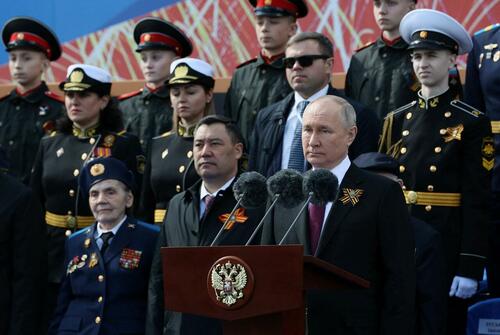 Via Sputnik/Reuters
Via Sputnik/Reuters
The Kremlin side has not publicly acknowledged this, and so the breaking report should be taken with a grain of salt, given this contradicts Putin's public stance that Russia will never relinquish the four territories which were declared part of the Russian Federation after the Moscow-backed referendums of Sept. 2022.
However, if Russian forces did simply halt their advance based on an agreed-upon freeze in fighting, there would be portions of these territories still not under Russian military control.
The FT report goes on, "The US has since floated ideas for a possible settlement that includes Washington recognizing Russian ownership of Ukraine’s Crimean peninsula, the people added, as well as at least acknowledging the Kremlin’s de facto control over the parts of the four regions it currently holds."
All of this is being reported hours after Ukraine's President Zelensky said he has rejected the possibility of ceding over Crimea, after the Trump administration reportedly offered the 'gift' to Putin of US recognition of Russian sovereignty over the strategic peninsula and home to the Russian navy's Black Sea fleet.
According to Ukrainian media:
Ukraine will not legally recognize Russia's occupation of Crimea under any circumstances, President Volodymyr Zelensky said during a briefing in Kyiv on April 22.
"There is nothing to talk about. This violates our Constitution. This is our territory, the territory of the people of Ukraine," Zelensky told reporters.
Zelensky added, "As soon as talks about Crimea and our sovereign territories begin, the talks enter the format that Russia wants — prolonging the war – because it will not be possible to agree on everything quickly."
Kiev has also recently accused Moscow of using negotiations as a smokescreen while in actuality prolonging the war, also coming off the 30-hour Eastern truce, which saw both sides accuse the other of many violations.
The Financial Times acknowledged this possibility, and the fact that Moscow is in the driver's seat related to any potential settlement that would end the conflict, in the following:
But European officials briefed on US efforts to end the war cautioned that Putin would probably use the apparent concession as bait to lure Trump into accepting Russia’s other demands and forcing them on Ukraine as a fait accompli. "There is a lot of pressure on Kyiv right now to give up on things so Trump can claim victory," one of them said.
The reality remains that if Zelensky can't so much as admit that Crimea will be permanently in Russia's hands, with no hope of Kiev ever getting it back, the prospect of a peace settlement happening anytime soon seems very remote.
But clearly Moscow is seeking to show itself willing to compromise by these overtures, but whether there's much substance or genuineness behind the offer to halt all frontline fighting is another question. At the moment, at least 99.5% of Kursk territory is back in Russia's control. Russia's military also still continues to advance in remaining parts of Donetsk still held by Ukraine, but slowly and village by village.
* * *
Top products last week at ZeroHedge Store:
- ZeroHedge Waxed Canvas Hat
- IQ Biologix Astaxanthin (extremely potent anti-inflammatory)
- Anza SWAT Micarta Blued (made in the USA)
-
Site: ChurchPOP
The Holy Father entered into eternal life on the morning of April 21, 2025.
When the news first broke, many Catholics around the world took to social media to respond to the news of the Holy Father’s death, the impact he had on their lives, and the beautiful memories they have of his 12-year-long pontificate.
Father John S. Hogan, OCDS, shared an interesting connection between the death of the Holy Father and the Doctor of the church, Saint Catherine of Siena.
Here is Father Hogan’s post on X:
It has been pointed out to me that Pope Francis has died on the first day of the novena to St Catherine of Siena. Give her role in guiding popes & the reform of the Church, it would be most fitting to pray to her for Francis, for the Church in these days & the coming conclave. pic.twitter.com/s6M8FL0jlq
— Fr John S. Hogan, ocds (@jshocds) April 21, 2025 “It has been pointed out to me that Pope Francis has died on the first day of the novena to Saint Catherine of Siena. Given her role in guiding popes & the reform of the Church, it would be most fitting to pray to her for Francis, for the Church in these days & the coming conclave,” Father Hogan posted on X.The feast day of Saint Catherine of Siena is April 29.
Her novena is traditionally prayed for nine days leading up to her feast day. However, the novena asking for her intercession can be prayed anytime during the year.
Saint Catherine of Siena would be a great intercessor to pray for the repose of Pope Francis’ soul.
She greatly respected the Chair of Peter and played an important role during the Great Schism of the West (1378-1417). This powerhouse saint urged Pope Gregory XI to return the papacy from Avignon to Rome, restoring Church authority. It is also said that she had a role in pressuring his successor, Pope Urban VI, to address clerical corruption.
During her life, Saint Catherine of Siena wrote hundreds of letters to popes, cardinals, and rulers. She notably urged them to reject materialism and embrace humility. She is quoted, saying, “Be holy men!”
On Papal authority, Saint Catherine of Siena said:
"Even if the Pope were Satan incarnate, we ought not to raise up our heads against him, but calmly lie down to rest on his bosom. He who rebels against our Father is condemned to death, for that which we do to him we do to Christ: we honor Christ if we honor the Pope; we dishonor Christ if we dishonor the Pope."Saint Catherine of Siena often prayed for the Pope. It is only natural that she continues to do so!
Here is the novena prayer to Saint Catherine of Siena:
Heavenly Father, your glory is in your saints. We praise your glory in the life of the admirable Saint Catherine of Siena, virgin and doctor of the Church. Her whole life was a noble sacrifice inspired by an ardent love of Jesus, your unblemished Lamb.
In troubled times, she strenuously upheld the rights of His beloved spouse, the Church. Father, honor her merits and hear her prayers for each of us, and for our whole parish family dedicated to her. Help us to pass unscathed through the corruption of this world, and to remain unshakably faithful to the church in word, deed, and example.
Help us always to see in the Vicar of Christ an anchor in the storms of life, and a beacon of light to the harbor of your Love, in this dark night of your times and men’s souls. Grant also to each of us our special petition . . .
(State your own intentions)
We ask this through Jesus, your Son, in the bond of the Holy Spirit.
Amen.
Saint Catherine of Siena, pray for us and for Pope Francis!
-
Site: Zero Hedge'Soft' Data Slaughter Continues As Richmond Fed Manufacturing New Orders Expected To Be The Worst Ever...Tyler Durden Tue, 04/22/2025 - 14:20
In yet more confirmation that propaganda works, two 'soft' data surveys this morning signal the end of the world is imminent... and it's worse than it's ever been before.
First, we saw The Philly Fed Non-Manufacturing Survey plunge to -42.7 (in April) from -32.5 with current conditions and six-month-forward expectations at their worst levels since the peak of the COVID lockdowns...
Under the hood, Sales and CapEx expectations tumbled while Prices Paid soared to two year highs...
Simply put, firms remained pessimistic and continue to expect declines in activity over the next six months at their own firms and in the region.
The same - but worse - picture was evident with The Richmond Fed's Manufacturing Activity survey which tumbled to -13 (-7 exp) with overall Business Conditions plummeting to -30 - just shy of the lowest levels since the COVID lockdowns...
But, under the hood, it was expectations for New Orders that too the proverbial biscuit, collapsing to the worst levels in history... worse than at the very peak of global supply chain closure during the COVID lockdowns!!!
And Prices Paid are also soaring for Richmond Manufacturers...
And so, the trend continues lower in 'soft' data and higher in 'hard data'...
The question is - will we see a replay of Q2 2024 (where 'hard' data caught down to 'soft') or Q2 2023 (where 'hard' data kept rising and 'soft' data finally shrugged off the sentiment cloud)?
-
Site: AsiaNews.itGiorgio Licini, a PIME missionary, accompanied the pontiff on last year's trip to a distant frontier mission. 'Francis's lesson was to look inside ourselves before pointing the finger at atheists, the media or technological civilisation,' because 'A pilgrim does not have a programme, but a goal.'
-
Site: Zero HedgeGold-Backed Vs USD-Backed Stablecoins: Key DifferencesTyler Durden Tue, 04/22/2025 - 14:00
Authored by Dilip Kumar Patairya via CoinTelegraph.com,
What are gold-backed stablecoins, and how do they work?
Gold-backed stablecoins are digital currencies pegged to physical gold reserves and designed to maintain a stable value. The concept of gold-backed digital currencies dates back to the early days of cryptocurrency, with developers aiming to create a reliable store of value.
Each gold-backed stablecoin represents a specific quantity of gold. For instance, one token might be linked to 1 troy ounce of gold. A troy ounce is a unit of weight used explicitly for weighing precious metals like gold, silver and platinum; it is equal to 31.1034768 grams.
A third party typically holds the gold reserves to ensure security and transparency. The issuing entity is responsible for maintaining an equivalent amount of physical gold for every token in circulation.
The token’s price remains closely aligned with the market value of gold. Buyers pay gold's spot price for a token. Similarly, if the stablecoin fails, the tokenholders can redeem their tokens for the gold. Practically, the gold is liquidated for electronic fiat transfers.
Regulators classify gold-backed stablecoins as commodity-backed stablecoins or asset-referenced tokens (ARTs), depending on jurisdiction. Examples of gold-backed stablecoins include Tether Gold , Paxos Gold PAXG and Alloy (aUSDT).
Did you know? On April 1, 2025, Tether Gold (XAUT) traded at $3,165. Its market capitalization was about $780.3 million, with a daily trading volume of $11.03 million.
Advantages of gold-backed stablecoins
Gold-backed stablecoins combine the stability of gold with the flexibility of digital assets. Their blockchain-based nature offers benefits beyond traditional paper gold.
Here are a few advantages of gold-backed stablecoins:
-
Flexible alternative to physical gold: Gold-backed stablecoins function as blockchain-based representations of gold, offering a more efficient and flexible alternative to holding physical bullion.
-
Instant global trading: Unlike traditional gold ownership, these tokens can be stored in cryptocurrency wallets from which you can transfer instantly and trade globally with a nominal transactional fee.
-
Access to DeFi applications: They also enable decentralized finance (DeFi) applications, expanding their usability beyond traditional gold investments.
-
Better security: Physical gold is vulnerable to theft, loss and damage. Gold-backed stablecoins, stored on blockchain networks, can be more secure.
-
Programmability: Gold-backed stablecoins are programmable because they exist on blockchain networks such as Ethereum. This allows them to interact with smart contracts and work with decentralized apps (DApps).
-
Divisibility: Splitting physical gold or even paper gold is challenging. However, you can split a single token into several decimal places, which can be recorded on the blockchain.
-
Make gold more accessible: Gold-backed tokens enable you to easily access gold. An ounce of gold may be expensive, but you can easily buy 0.001 of a token.
-
Interoperability: When you release a token on a widely used network like Ethereum, it is instantly operable with DApps, DeFi platforms and wallets supported by the network.
Diversification of funds: Investing in gold-backed stablecoins enables you to diversify your funds. It is a unique type of asset that protects you against currency value drops.
What are USD-backed stablecoins, and how do they work?
USD-backed stablecoins are cryptocurrencies designed to maintain a stable value by being pegged to the US dollar. Each token is typically backed by an equivalent amount of US dollars or cash-equivalent assets held in reserve by a financial institution or trust.
For every USD-backed stablecoin issued, the issuing entity must maintain a corresponding reserve amount to guarantee its value. This ensures that holders can always redeem their tokens for an equivalent dollar amount. Examples of USD-backed stablecoins are Tether, USD and Binance USD (BUSD), all of which are used in trading, payments and DeFi.
You can buy and sell stablecoins through crypto exchanges like Binance or Coinbase. To purchase, create an account, complete verification, deposit fiat or crypto and choose a stablecoin such as USDt or USDC. To sell, go to the trading section, select your stablecoin, and exchange it for fiat or another crypto. Some wallets and peer-to-peer (P2P) exchanges also support stablecoin trading.
Did you know? The EU's Markets in Crypto-Assets Regulations (MiCA) have forced crypto exchanges to delist USDT and other non-compliant stablecoins, resulting in a growing market for Euro-backed stablecoins. USDC continues to be a prominent USD alternative in the region.
Advantages of USD-backed stablecoins
USD-backed stablecoins offer several advantages, making them a critical part of the crypto ecosystem. By combining the reliability of fiat currency with the efficiency of blockchain, USD-backed stablecoins play a vital role in digital finance.
Here are a few advantages of USD-backed stablecoins:
-
Steady value: Unlike traditional cryptocurrencies, which experience high volatility, stablecoins maintain a steady value, making them an ideal unit for payments, particularly in exchange for goods and services.
-
Liquidity and accessibility: USD-backed stablecoins are widely accepted across crypto exchanges, payment platforms and DeFi applications. This allows traders to move funds quickly between assets without converting crypto back to fiat currency, reducing transaction costs and delays.
-
Transparency: Issuers generally provide regular audits and reports on their reserves, which enables users to verify that actual USD holdings back each token. This transparency builds trust among users, issuers and regulators.
-
Fast, low-cost international payments: Operating on blockchain networks, USD-backed blockchain networks facilitate fast, low-cost international payments without relying on traditional banking systems. This makes them a preferred option for remittances and cross-border trade.
-
Safe haven during market downturns: USD-backed stablecoins offer stability during periods of market volatility. Investors and traders often convert volatile crypto holdings into stablecoins to protect their value without exiting the crypto market entirely.
Still, please note that stablecoins may depeg occasionally because of several macro and microeconomic factors.
Macro factors include changes in economic conditions, such as inflation or an increase in interest rates. Micro variables involve differences in market conditions, such as changes in the underlying collateral and problems with liquidity.
When Silicon Valley Bank failed in March of 2023, the USDC stablecoin deviated from its peg because $3.3 billion of its reserves were held there.
Did you know? Stablecoins are of four types: fiat-collateralized, crypto-collateralized, algorithmic and commodity-collateralized. Algorithmic stablecoins have gradually gone out of favor.
Key differences between gold-backed and USD-backed stablecoins
Gold-backed and USD-backed tokens are stablecoins, yet they differ in several ways. This comparison explores the fundamental differences, focusing on their backing assets, price stability, liquidity, adoption and primary use cases:
Backing asset: Physical gold vs fiat reserves
Gold-backed and USD-backed stablecoins differ primarily regarding the collateral that supports their value. Gold-backed stablecoins are tied to physical gold, usually at a fixed ratio, while some USD-backed stablecoins are backed by a reserve of US dollars, short-dated and cash deposits.
Price stability: Long-term vs short-term
The value of gold-backed stablecoins fluctuates depending on the market price of gold, which can experience short-term volatility but tends to appreciate over the long run. USD-backed stablecoins maintain a 1:1 peg to the dollar, ensuring more predictable short-term stability. Their value remains steady unless external factors, such as regulatory changes or mismanagement of reserves, impact the peg.
Liquidity and adoption: Use of USD-backed in DeFi applications
USD-backed stablecoins are more liquid and widely accepted in the crypto ecosystem, including exchanges, payment systems and DeFi applications. They are frequently used for trading and lending. Moreover, many countries in Latin America, such as Bolivia, have adopted USDC for payments. Gold-backed stablecoins, while useful for preserving value, are less commonly integrated into DeFi protocols due to low liquidity concerns.
Use cases: Value storage
Gold-backed stablecoins serve as a hedge against inflation, appealing to investors seeking growth. USD-backed stablecoins are preferred by investors seeking stability and value storage. USD-backed stablecoins are used for everyday transactions, trading and financial services, thanks to instant liquidity and ease of use.
Regulatory considerations: Compliance
Gold-backed stablecoins and fiat-backed stablecoins differ in regulation due to their underlying assets. For instance, specific regulations such as the Guiding and Establishing National Innovation for US Stablecoins Act (GENIUS Act) and the Stablecoin Transparency and Accountability for a Better Ledger Economy (STABLE) Act have emerged in the US for USD-backed stablecoins. However, no specific regulations exist for gold-backed stablecoins as of March 31, 2025, though they are expected to adhere to the usual banking and financial regulations.
Can gold-backed stablecoins surpass USD-backed coins in adoption?
Two factors favoring gold-backed stablecoins are their inflation-resistant properties and long-term stability. As Bitcoin advocate Max Keiser points out, gold enjoys greater global trust than the US dollar, particularly among nations with strained relations with the US.
But is this enough for gold-backed stablecoins to get ahead of its more celebrated competitor?
USD-backed stablecoins, often under scrutiny in the days of the Biden administration, are now enjoying the support of the US government headed by President Donald Trump. The current dispensation views USD-backed stablecoins as a potent tool to maintain the status of the US dollar as the world's reserve currency. While the Trump administration has been crypto-friendly since it took over, its support of the GENIUS Act and the STABLE Act, which await Congressional approval, is further testimony of this approach.
Treasury Secretary Scott Bessent has emphasized stablecoins as a strategic tool for sustaining the dollar’s reserve currency status. Federal Reserve Governor Christopher Waller has echoed this sentiment, supporting stablecoins as a means to uphold US dollar hegemony.
Still, countries including Russia, China and Iran, arch-rivals of the US, might prefer gold-backed stablecoins over USD-backed stablecoins because the bullion-powered coins may help them limit the influence of the US dollar. According to Keiser, China and Russia collectively hold around 50,000 tons of gold, more than officially reported. If true, this gold could be used to roll out gold-backed stablecoins.
If gold-backed stablecoins gain wider adoption, they could challenge the US government’s efforts to maintain dollar dominance through stablecoins. To that end, stablecoin issuer Tether introduced Alloy (aUSDT) in June 2024, a gold-backed digital asset tied to Tether Gold (XAUT), a token representing claims on physical gold.
Gold-backed stablecoins resemble the gold-backed US dollar before 1971. That was the year when President Richard Nixon abolished the convertibility of the US dollar to gold. XAUT has enjoyed a 15.7% price increase year-to-date, suggesting the growth potential of the bullion-backed stablecoins.
While gold-backed stablecoins present a compelling alternative, the battle for dominance between gold and USD-pegged stablecoins remains ongoing, influenced by geopolitical factors, financial policies, and market demand.
-
-
Site: LifeNews
Gov. Kelly Armstrong has signed the North Dakota Med Ed bill to protect pregnant women’s lives from abortion misinformation. Sponsored by Susan B. Anthony National Pro-Life Women’s Caucus members Rep. Karen Rohr and Sen. Janne Myrdal, the bill establishes materials to educate medical professionals on the ability and necessity of providing emergency care to pregnant women under North Dakota’s pro-life law. HB 1511 requires OB-GYNs to review the materials on the medical and legal parameters of North Dakota law before performing an abortion.
REACH PRO-LIFE PEOPLE WORLDWIDE! Advertise with LifeNews to reach hundreds of thousands of pro-life readers every week. Contact us today.
North Dakota is among the first states to pass a Med Ed bill to end the confusion caused by the abortion lobby through direct education to doctors. South Dakota Gov. Kristi Noem signed the first Med Ed bill into law in 2024 and this year Kentucky passed a law dispelling that women can’t get medical care under the state pro-life law. Other states have taken similar steps administratively, including Texas and Florida.
Sue Liebel, state affairs director for SBA Pro-Life America, celebrated the victory for North Dakota moms:
“We thank Gov. Armstrong for making North Dakota among the first states to protect women’s lives with a Med Ed law. Regardless of political affiliation or whether someone is pro-life or pro-choice, North Dakotans of all philosophies can celebrate that moms will be better protected through direct education to our doctors on their ability to exercise reasonable medical judgment in all situations.
“Though every state with a pro-life law allows pregnant women to receive emergency care, the abortion industry has sown confusion on this fact to justify their position of abortion without limits. With many in the media refusing to fact-check this obvious lie, other states should look to North Dakota in combatting dangerous abortion misinformation.”
North Dakota is one of 22 states with a pro-life law protecting life at 12 weeks or sooner. North Dakota’s pro-life law is not currently in effect due to litigation.

The post North Dakota Governor Signs Bill Confirming Abortion ban Doesn’t Deny Women Emergency Care appeared first on LifeNews.com.
-
Site: Zero HedgeBuyers Strike Arrives: Foreign Demand For 2Y Treasury Auction Craters To 2 Year LowTyler Durden Tue, 04/22/2025 - 13:48
For much of April, and certainly following the vomit-inducing surge in 10Y yields two weeks ago, the biggest question in the market has been whether China is dumping their roughly $1 trillion in treasuries. And while we won't know until June when the April TIC data hits (and even then the data is at best mixed), moments ago we found something just as important: the Chinese are certainly no longer rushing to buy US paper, something we learned following today's 2Y auction which saw a dramatic plunge in Indirect (i.e. foreign) demand.
Let's back up.
Today's $69 billion auction priced at a high yield of 3.795%, down from 3.984% last month and the lowest since last September. It also tailed the 3.789% When Issued by 0.6bps, this was the first tail since January and the biggest tail since October.
But while the small tail could be glossed over, the first sign of trouble was today's bid to cover which slumped from 2.66 to 2.52, the lowest since October, and below the six-auction average of 2.64.
But things really went off the rails when looking at the internals, where unlike the recent set of 3/10/30 auctions which saw Direct bids collapse, the Direct award in today's 2Y was solid, in fact at 30.1%, it was one of the highest on record. The problem is that the surge in Directs came at the expense of a plunge in Indirects, or foreign buyers, which tumbled to a two year low. As shown below, the April Indirect takedown was just 56.2%, the lowest since the depth of the bank bailout crisis in March 2023.
in other words, while Indirect demand was strong 2 weeks ago, it has since collapsed, and if drops another 10-20% lower, the Fed may have no choice but to restart QE to provide what it is explicitly supposed to do: be a Buyer of Last Resort backstop to the US treasury.
Finally, with surging Directs, and plunging Indirects, Dealers ended up holding on to 13.7%m above last month's 10.7%, and modestly above the recent average of 11.6% if hardly an outlier print.
Overall, this was a very mediocre - at best - auction, but it could have been far worse if Directs had not stepped in to fill the void left by the suddenly buyer's strike from Indirects, i.e., foreigners, i.e., China.
So keep a close eye on the week's remaining coupon auctions: unlike two weeks ago when all eyes were on the Directs, we are finally down to brass tacks, and keep a close eye on the only metric that matters: whether foreigners are finally done funding the trillions and trillions of US debt, leaving only the Fed's QE as an option.
-
Site: Zero HedgeGoldman Finds First Solar "Well-Positioned" To Benefit From US Tariffs On Asian Panel ProducersTyler Durden Tue, 04/22/2025 - 13:40
With the Trump administration preparing to impose new tariffs on U.S. solar imports from four Southeast Asian nations, Goldman analysts see Arizona-based First Solar as the top beneficiary, calling it "the leading U.S. panel manufacturer best positioned to gain from escalating trade protections."
The U.S. Commerce Department announced the new tariffs on Monday, stemming from a year-long trade investigation. The investigation found that solar manufacturers in Cambodia, Vietnam, Malaysia, and Thailand benefited from government subsidies that dumped low-cost panels into the U.S. market, undercutting domestic producers and harming the American solar manufacturing industry.
Cheap solar panels from Cambodia could face tariffs as high as 3,521%, mainly due to non-cooperation by solar manufacturers targeted in the U.S. investigation, which began under the Biden-Harris administration. Chinese manufacturer Jinko Solar's panels produced in Malaysia are set to be hit with a 41% tariff, while Trina Solar's products from Thailand face duties of 375%.
"This is a decisive victory for American manufacturing," said Tim Brightbill, partner at Wiley Rein and lead counsel for the coalition of solar companies that pursued the case, which Bloomberg quoted.
Brightbill said the findings in the new report confirm "what we've long known: that Chinese-headquartered solar companies have been cheating the system, undercutting US companies and costing American workers their livelihoods."
Goldman analysts Brian Lee, Nick Cash, and Tyler Bisset told clients that First Solar (FSLR) is the big "winner" here...
"Within our coverage of solar panel manufacturers, we continue to view FSLR as the main beneficiary from any incremental tariffs. As the leading solar manufacturer within the U.S., the company could be well positioned to raise ASPs," the analysts said.
FSLR shares are up 7% in premarket trading. As of Monday's close, shares were -31% on the year and down more than 58% since peaking around $300 a share last June.
Among other movers in the space: Sunnova Energy +5.6%, SolarEdge Technologies +3%, Array Technologies +1.7%, and Enphase Energy +1.2%.
-
Site: RT - News
Kiev and its European backers will be meeting with officials from Washington in London this week
The US will propose a peace deal that involves the recognition of Russian sovereignty over Crimea and freezing the Ukrainian conflict front lines, at a meeting with officials from Kiev and Western Europe this week, the Washington Post has reported, citing sources.
US President Donald Trump’s envoy Keith Kellogg is set to meet foreign ministers and security advisers from France, Germany, the UK and Ukraine in London on Wednesday. Trump's Secretary of State Marco Rubio and Special Envoy Steve Witkoff will reportedly skip the meeting.
US proposals, presented to Ukraine in Paris last week, also include Washington eventually lifting sanctions against Moscow under a future accord, people familiar with the matter told the outlet on Tuesday. One Western official reportedly described the pressure on Ukraine as “astounding.”
European officials are expected to push for security guarantees for Ukraine and postwar reconstruction efforts, possibly funded in part by frozen Russian assets, the report said.
Trump has threatened to walk away from a Ukraine peace initiative if progress is not made soon. He told reporters on Monday that he would be releasing details of the US proposals “over the next three days.”
Read more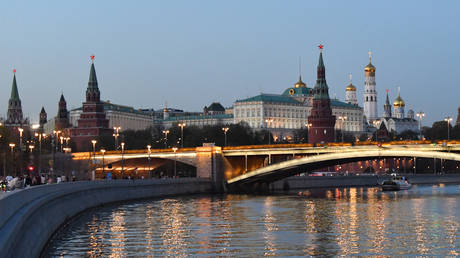 Kremlin outlines conditions for talks with Kiev
Kremlin outlines conditions for talks with Kiev
Witkoff, who has had multiple rounds of talks with senior Russian officials, including President Vladimir Putin, will visit Russia later this week, Moscow has confirmed. According to one of the Post’s sources, it was “Witkoff’s idea” for the US to designate Crimea as Russian “without forcing Ukraine to recognize it.”
Crimea held a referendum to join Russia in 2014 following a Western-backed armed coup in Kiev. The new Ukrainian government, along with its Western backers, has refused to recognize the vote’s legitimacy.
Ukraine’s Vladimir Zelensky has ruled out relinquishing any territorial claims against Russia and has urged the US and other nations to continue providing military aid – a policy the Trump administration has said it will end.
Moscow insists that the status of Crimea, the city of Sevastopol, and the four former Ukrainian regions which voted to join Russia in 2022, is not up for negotiation. Russian officials have emphasized that recognizing the “reality on the ground” is key to achieving lasting peace.
-
Site: Zero HedgeContainer Orders Plummet - Trade Deals Now Or Economic Depression SoonTyler Durden Tue, 04/22/2025 - 13:20
Global container booking volumes fell by 49% between the last week of March and the first week of April 2025, according to Freight Waves. Imports from China to the United States collapsed by 64%, with imports of apparel and textiles declining by a whopping 59% and 57%, respectively. The figures coming from shipping companies are worse than those seen during the Covid-19 crisis.
These alarming figures suggest that importers are unwilling to accept higher prices in the middle of a tariff war, that exporters cannot simply choose to move their products elsewhere easily, and that the excess capacity in many sectors is much larger than initially expected.
No one wants to accept the cost of tariffs, and this means that the only option for the economies with elevated productive overcapacity is to negotiate a trade deal, and quickly, or face an economic depression.
The mainstream view about tariffs was that United States consumers would pay the entire negative impact. This news suggests otherwise. The purchasing power of importers is higher than expected.
The number of order cancellations is so large that ports in China have had to take emergency measures to address the challenges created by piles of unsold containers.
The negative impact is enormous on ports, as fees plummet, but we cannot forget the dramatic effect on producers with excess capacity. Many global exporters are going to face bankruptcy if no trade deal is reached due to insufficient working capital.
In the European Union, leaders are concerned that the trade war between the United States and China will bring a flood of cheap products from China that could endanger local producers and create a significant economic problem.
Many exporters are facing a harsh reality: They cannot sell their products if they don’t export them to the United States, and the importers are not going to accept higher prices due to tariffs.
The reason why exporters cannot pass the cost of tariffs to United States consumers is because most of the products they delivered to America were only attractive because they were exceedingly cheap. When prices rise, demand decreases significantly. The tariff war has shown that demand is not inelastic.
The collapse in container orders proves Menger’s imputation theory. Output prices determine factor prices, not the other way around.
The unsustainable state of global shipping will compel countries to expedite trade agreements with the United States, failing which they risk a cascade of economic collapses within their business structures.
The slump in container orders proves that United States importers are not going to accept any price, that excess capacity in the main retail sectors is enormous, and that there is no straightforward alternative for American consumers.
If you believed that other countries would hesitate to negotiate trade agreements with the United States, you need to reconsider. The American consumer loves cheap products but does not want the same goods at twice the price.
The United States economy may suffer a contraction due to this sudden slump in imports, but the consequences are much larger for the exporter nations.
The outcome is not positive for any country, so there is only one choice to make: negotiate or lose. If countries fail to establish significant trade agreements with the United States in the near future, their retailers are likely to face a severe working capital crisis.
-
Site: RT - News
The late Catholic leader was humble and always supported the abused and the downtrodden – except in one very sad case
When a great man and leader of the Roman-Catholic Church – and beyond it – like Pope Francis dies, it may seem almost impious to speak or write about politics. But in his case, we know for certain that it simply means doing what he told us to do.
For one of his fundamental teachings was that we have a religious and moral – not merely a civic – duty to engage in politics. He made this clear, for instance, in one of his major statements, the 2020 encyclical Fratelli Tutti (All Brothers). There, he spelled out the pronouncedly broad and political – not merely intimate, small-scale, or private – meaning of the story of the Good Samaritan, one of the most famous parables taught by the founder of all types of Christianity, Jesus of Nazareth.
In Fratelli Tutti, Francis stressed that the Good Samaritan story “summons us to rediscover our vocation as citizens of our respective nations and of the entire world, builders of a new social bond” in order “to direct society to the pursuit of the common good.” That is about as far away as you can get from the intellectual platitude and ethical cop-out of religion-is-just-a-private-matter. And that was a good thing, too.
Because, as Francis made clear time and again, he – rightly – saw our world in deep social, ecological, and, fundamentally, spiritual crisis. If you share his belief or not, it is important to understand that political engagement to save this world, for him, was a matter of survival of not just a species and its much-abused planet, but of God’s creation.
There is something else we should remember about this late pope. He was known for being both genuinely relatable – especially with the poor, weak, abused, sinful (his last major meeting was with JD Vance, after all), and troubled – and, at the same time, capable of harsh rebuke and tough determination. Having worked as a bouncer in his youth and later as a Jesuit taskmaster, he knew how to handle the gathering of careerist, vain, pushy, and scheming egos that the higher Church also is.
He was a decent and mostly kind man, but no push-over. And yet, with all his assertiveness, he was also humble, not in an ostentatious but a substantial manner: the kind of humility that makes you give up on many of the lifestyle perks that have corrupted the papacy and instead wash the feet of prison inmates. Or admit that you are not the one to judge, as once when commenting on a priest who was said to be gay.
Read more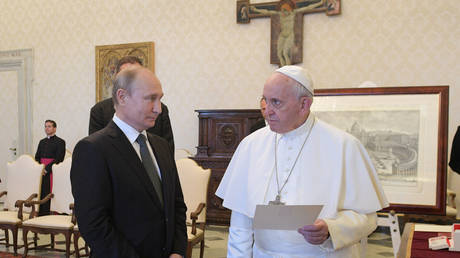 Putin praises legacy of Pope Francis
Putin praises legacy of Pope Francis
Think about it: it is true, obviously; and, by the standards of tradition, it is at the same time something sensationally extraordinary for a pope to say about a priest. For, remember, the Roman-Catholic Church, is not a fake democracy – as secular states usually are now – but an unabashed absolute, if elective, monarchy.
Against that background – Francis’s instructions to engage with politics and his fundamental humility – two simple questions make sense: What is the political meaning of his tenure as pope between 2013 and 2025? And where did he succeed and where did he fail?
A full disclosure won’t do any harm either: I am writing about this pope as someone raised as a Roman-Catholic yet now largely lapsed. Largely, because, in reality, with something like a Catholic upbringing, about which I am far from complaining, “there are,” as the Russians wisely say about another experience that shapes you for life, “no formers.” Perhaps, that explains why I have always felt much sympathy for him. Although, come to think of it, that was due to his politics.
Regarding those politics, for starters, let’s note a basic piece of context that, however, is often overlooked: It’s commonly noted that Francis was a multiple first: first pope from Latin America, first Jesuit, first one not from Europe for well over a millennium. But there was yet another important first: even if the Cold War between – very roughly – the capitalist West and the socialist-Communist Soviet camp ended in the late 1980s and Francis became pope in 2013, he was, actually, the first substantially post-Cold War pope.
Counterintuitive as that fact may be, it is not hard to explain it. It was the result of the de facto rule that popes get elected when they are old and likely to be set in their ways and – usually, not always – serve until death. Specifically, once the Cold War had ended, the very Polish and very conservative John-Paul II – a quintessential Cold War pope – stayed in office until 2005. His successor, the not merely conservative but leadenly reactionary Benedict XVI from Germany was, in essence, the Angela Merkel of the Vatican: the one you call when, in reality, everything must change, but you are in obstinate denial about it. And did Benedict fulfill those expectations!
It was really only after rigid Benedict abdicated and, in effect, retired – the first pope to do so in more than half a millennium – that there was an opening for finally moving the Church beyond this sorry state of stagnation. And Francis, once elected to his own surprise, certainly did his best – or, as his many critics and opponents would gripe, worst – to use that opportunity.
Read more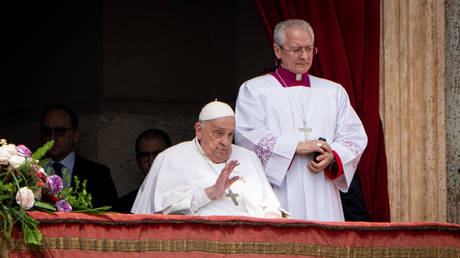 Vatican reveals cause of Pope Francis’s death
Vatican reveals cause of Pope Francis’s death
Apart from setting an example by his personal modesty – for instance, just two rooms in a Vatican hostel, a comparatively simple pectoral cross, no flashy cape or dainty red slippers, and, finally, orders for a fairly simple coffin, lying-in-state, and burial – Francis tackled major unresolved issues inside the Church, such as finance scandals and corruption, sexual abuse, and the prevalence of rule by clique and intrigue.
On these issues, he certainly did not universally succeed. Regarding child abuse by clericals, his reactions and actions were honest, well-intentioned, and sometimes unprecedented and consequential: as when he, in essence, forced a mass resignation of bishops in Chile and defrocked a truly demonic US cardinal for his revolting crimes and sins. But his record remains mixed. He himself, to his credit, ended up admitting his “grave mistakes” in this crucial area. Victims of clerical child abusers and critics find that his efforts did not go far enough.
Francis could neither defeat nor eradicate the hardy networks, lobbies, and plots of the Vatican and the Church leadership more broadly. In particular, the – surprise, surprise – conservative US cardinals form a powerful, mean lobby. But to be fair, no single person could have cleaned up these Augean Stables. That would take a miracle, one that did not take place under this pope.
Yet Francis did have an impact. His challenge was sometimes fierce, and the resistance it provoked proves that he hit a nerve. This, clearly, is an issue which will be decided, if ever, in the future. In that respect, note that kind, smiling Francis was worldly and tough enough to promote – where he could (an important caveat) – like-minded men to high office. As he installed the preponderant majority of the 135 or 136 cardinals who will elect his successor, his policies might be continued. Yet Church politics is less transparent than the Trump White House and much more complex. Nothing is certain.
Yet what about the world beyond the upper ranks of the Church? That is, after all, clearly what Francis – the pope with a personal cross that depicted Jesus as the Good Shepherd – cared about the most. For practical purposes and to greatly simplify, think of that world-beyond-peak-Church as consisting of two concentric circles: the inner yet large circle consists of currently about 1.4 billion Roman Catholics globally, and the outer, even larger one of everyone else in a world population over 8 billion.
There, Francis pursued two great lines: He clearly sought to finally do justice to the fact that demographically and in terms of commitment and dynamism, Roman-Catholicism’s center of gravity has inexorably shifted away from Europe and, roughly speaking, to the Global South-plus: Latin America, Africa, and Asia, too. Indeed, over the last half-century, Africa and Asia have been the only two regions where the increase in the number of Catholics has exceeded population growth.
Read more Pope’s death sparks scorn from Ukrainian officials and influencers
Pope’s death sparks scorn from Ukrainian officials and influencers
When elected, he immediately pointed out – with a hardly hidden edge, I believe – that his cardinal brothers had plucked him “from the ends of the Earth.” That was a statement in favor of those “ends” and against the breathtaking, institutionally inbred provincialism that has made 80 percent of popes come from tiny Italy. By now, though, the cardinals who will elect the next pope come from 94 countries and less than 40 percent are from Europe, “with a record number from Asia and Africa.”
This, true globalization of the Roman-Catholic Church in its most fundamental meaning, namely as the community of its members is what Francis was in sync with as no pope before him, not even the globe-trotting John-Paul II. If the Church is wise, it will follow his example; if it is foolish – which, historically speaking, happens a lot – it will revert to Benedict XVI’s futile retreat into the past.
The other major policy Francis consistently pursued was – believe it or not – a form of socialism. Recall that socialism is a broader church than Marxism. Socialists, even by the narrowest, most modern definitions, existed before Marxism. If we widen the lens to ancient history, a certain rebel called Jesus, executed by the indispensable empire of his day, obviously, was one, too.
Francis understood that and stuck to it. That is why The Economist sniffles at what it mislabels as his populist and Peronist leanings. In reality, the last pope was a sharp critic of populism, if understood as, say, Trumpism (or Sanderism-AOC-ism, I would add): the fake appeal to longings for justice solely to control, mobilize, and profit.
The core of Francis’s de facto socialist position was – as The Economist, to its credit, also admits – “scorn for capitalism” or, to quote the Washington Post, another party organ of the global oligarchy – a strong concern for “social justice.” Indeed. And then some. In sum, Francis was not a Marxist. He did not see eye to eye with Latin American Liberation Theology and his behavior during the right-wing dictatorship in Argentina may have been less than exemplary. But, as pope, he was, in effect, a man of the Left. He had the breadth of mind and the strength of character to reject the unfortunate recent hegemony of liberal capitalism in favor of something fairer and more moral, something worthy of humanity. In the dark post-Cold War that we are forced to inhabit, that fact made the Roman-Catholic pope one of the main forces (next to China, intriguingly) – weak as it may have been – of survival of leftwing ideals.
Those tempted to underestimate such influence - as Stalin is reported to have done: “The pope? How many divisions?” - should ask themselves where his Soviet Union is now (hint: nowhere). And yet the Church is still around.
Read more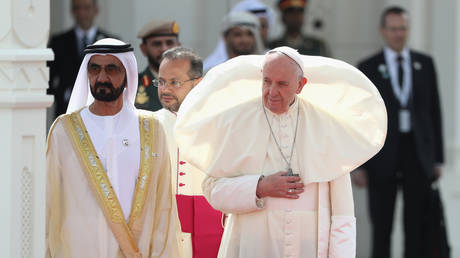 Russian Muslim leader commends Pope Francis
Russian Muslim leader commends Pope Francis
There was another issue of immense importance for our future on which he stood out by being more honest and more courageous than all too many others: Francis did repeatedly censure Israel’s – and the West’s – brutal slaughter of the Palestinians, using terms such as “cruelty” and “terror” and pointing out that what Israel is doing is not even war, but, clearly something worse.
And yet, those who now claim that he condemned the Gaza Genocide are wrong, unfortunately. I wished he had, but he did not. The fact remains, painful as it may be for those who liked and respected him (such as I), that he failed to take this crucial and necessary step. The closest he came to it was the following, far too cautious statement: “According to some experts, what is happening in Gaza has the characteristics of a genocide. It should be carefully investigated to determine whether it fits into the technical definition formulated by jurists and international bodies.”
That was more than almost any other leader in the “value-driven” West; it was also more than the studious public silence practiced by Pius XII during that other holocaust, when the Germans did not support Jews committing a genocide, as now, but – together with their many collaborators and friends – committed a genocide against Jews. But both are pitiably low bars.
As the pope, that is, not just some political leader but a man with great soft power and extraordinary moral duties by design, he should, as a minimum, have condemned the genocide as being just that and told all Roman-Catholics that not opposing it in every way they can is a grave sin.
He should also have excommunicated co-genocider-in-chief Joe Biden and preening neo-Catholic JD Vance. Pour encourager les autres. Francis did have a steely side. This was where the world needed him to show it most, but he did not.
I like to think he would be the first to admit this fact. Because that is the way he was: great, fallible, and humble.
-
Site: LifeNews
On April 29, House Speaker Mike Johnson is slated to join SBA Pro-Life America as keynote speaker at the group’s Pro-Life America Gala.
The pro-life movement is coming together for a historic evening to celebrate the movement and renew the fight for every baby and every mom. Additional speakers include SBA Pro-Life America President Marjorie Dannenfelser, U.S. Senators Tim Sheehy, Bernie Moreno, Steve Daines, and Lindsey Graham.
“We are delighted Speaker Mike Johnson, a dear friend and longtime pro-life champion, will join us as our keynote guest. Speaker Johnson has boldly fought for life as an activist, litigator, state legislator, and now as a leader in Congress,” said Marjorie Dannenfelser, president of Susan B. Anthony Pro-Life America. “From consistently standing up against Biden’s radical pro-abortion agenda to advocating for moms and babies, Speaker Johnson leads the pro-life majority in the House to serve moms and families and protect children in the womb.”
REACH PRO-LIFE PEOPLE WORLDWIDE! Advertise with LifeNews to reach hundreds of thousands of pro-life readers every week. Contact us today.
Johnson commented:
“I am grateful to join Marjorie and all my friends at SBA Pro-Life America who are leading the charge in advocating for unborn children and their mothers. I look forward to celebrating all that our movement has accomplished as we reflect on and renew our commitment to building a culture of life. At the heart of the American political experiment is the right to life, and Congressional Republicans are committed to the preservation of this fundamental principle.”
Previous SBA gala speakers include President Donald Trump, Vice President Mike Pence, Marco Rubio, Nikki Haley and Mike Huckabee, among others.

The post Speaker Mike Johnson Will Keynote Major Pro-Life Event appeared first on LifeNews.com.
-
Site: Mises InstituteThe non-aggression principle is often ridiculed as being abstract and unrealistic. However, it is possible to function in the real world living by this principle, something Murray Rothbard demonstrated using logic and clear thinking.
-
Site: AsiaNews.itAnswering a journalist's question, a Foreign Ministry spokesperson praised 'constructive contacts and engaged in useful exchanges' between China and the Holy See. But, in the name of sinicisation, they honouran head of State, not a spiritual figure that many Catholics in the People's Republic of China view as a point of reference. The presence of Chinese bishops at Francis's funeral is an open question.
-
Site: Mundabor's blogAfter we have, symbolically, buried the Evil Clown and all his mad stunts, it is perhaps fitting to start some reflection about what we can, realistically, expect from the Conclave. I am, as a rule, a very optimistic guy. My glass is always so full, that the matter is occasion of benevolent mockery among friends […]
-
Site: RT - News
The levies target products manufactured in Malaysia, Cambodia, Thailand, and Vietnam
Washington has set tariffs of up to 3,521% on solar imports from Southeast Asia, according to information published by the US Department of Commerce on Monday. The hikes follow allegations that Chinese-owned manufacturers operating in the region had violated trade rules.
The tariffs target imports from Malaysia, Cambodia, Thailand, and Vietnam, countries that collectively supplied over $12.9 billion in solar equipment to the US last year, according to Bloomberg.
Known as antidumping and countervailing duties, the measures aim to counteract the impact of what the US Commerce Department deems to be unfair subsidies and pricing practices.
The decision was made following a petition lodged by the American Alliance for Solar Manufacturing Trade Committee, which represents several US-based manufacturers. The domestic firms alleged that Chinese solar manufacturers operating factories in the four Southeast Asian countries exported panels at prices lower than production costs and benefited from unfair subsidies that undermine the competitiveness of American products.
Read more Airbus pulls back on ‘green’ jet – WSJ
Airbus pulls back on ‘green’ jet – WSJ
The penalties vary by company and country: Jinko Solar's products from Malaysia face combined dumping and countervailing duties of 41.56%, Trina Solar's Thai-made goods are subject to 375.19% tariffs, and Cambodian suppliers, who did not cooperate with the probe, face punitive levies of up to 3,521%.
Critics of the measure, such as the Solar Energy Industries Association (SEIA), argue that the tariffs would hurt US solar manufacturers by increasing the cost of imported cells, which American factories use to assemble panels, Reuters noted.
The International Trade Commission, an independent, nonpartisan US federal agency that investigates trade-related matters, is set to vote in June to determine whether the domestic industry was materially harmed by the imports, a necessary step for the tariffs to take full effect.
After similar duties were imposed on solar imports from China roughly 12 years ago, Chinese firms responded by setting up operations in other nations that weren’t affected by the tariffs, noted Bloomberg.
READ MORE: China announces retaliatory sanctions against US officials
The new levies will come on top of the broad tariffs introduced by US President Donald Trump, which have jolted global markets. So far, Trump has imposed tariffs of 145% on Chinese imports, and threatened a further possible hike to 245%.
China has accused the US of “bullying,” retaliated with a 125% tax on US products and vowed to “fight to the end.”
-
Site: RT - News
Ronen Bar claims he was fired by Israel’s PM for not displaying unconditional loyalty
The head of Israel’s Shin Bet, its domestic intelligence agency, has accused Prime Minister Benjamin Netanyahu of firing him for his refusal to carry out a number of illegal operations, including spying on domestic protestors.
Ronen Bar was formally sacked last month, with the official reason cited as a lack of trust and the spy chief’s alleged failure to prevent the October 2023 Hamas attack. It marked the first time in Israeli history that a domestic security chief was fired by the government. However, the Israeli Supreme Court has issued an injunction freezing the dismissal.
Read more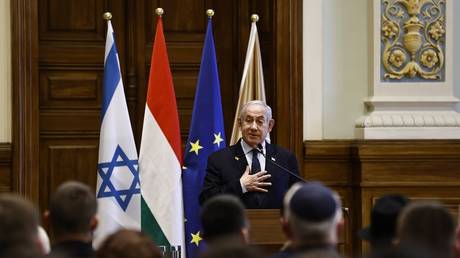 No EU country will arrest Netanyahu on ICC warrant – Belgian PM
No EU country will arrest Netanyahu on ICC warrant – Belgian PM
In a 31-page affidavit submitted to the Supreme Court on Monday, Bar dismissed the official reason, stating that it “does not lie in the professional realm but in a demand for personal loyalty” to Netanyahu.
He claimed that the Israeli prime minister wanted “to see the Shin Bet act against citizens involved in protest activity and demonstrations against the government,” with a special focus on monitoring “protest funders.”
According to Bar, he was also told to ignore court rulings in the event of a constitutional crisis and to obey the prime minister. On top on that, Bar claimed he was pressured to help Netanyahu, who faces corruption charges, avoid testifying in the case.
At the same time, the Shin Bet head acknowledged the agency’s failings ahead of the Israel-Hamas war and indicated he would resign before the end of his term.
READ MORE: UN points out major flaw in latest Israeli protest
Netanyahu is on trial in three graft cases, in which he is accused of taking bribes and luxury gifts from media personalities in exchange for furthering their financial interests. The prime minister has denied any wrongdoing.
Responding to the affidavit, Netanyahu’s office said it was “full of lies,” adding that Bar had “failed miserably” in his response to the Hamas attack.
Since the Hamas surprise assault, Netanyahu has faced widespread and persistent protests across the country. Many Israelis have accused his government of failing to prevent the deadly incursion and criticized his handling of the Gaza war. Demonstrators, including families of hostages held by Hamas, have demanded Netanyahu’s resignation and early elections.
-
Site: AsiaNews.itFrom al Azhar to Dharamsala, world religious leaders express sorrow over the passing of Pope FrancisFor Grand Imam al-Tayeb, who signed the Abu Dhabi Document on Human Fraternity with Francis in 2019, 'The world has lost a humanitarian icon'. Shia Ayatollah Al-Sistani, whom he met in Iraq in 2021, praises the pontiff for upholding 'the values of harmony among people'. From his exile in India, the Dalai Lama highlights Francis's 'simple but meaningful life". The president of the World Jewish Congress and a Bahá'í leader remember the Holy Father.



